
Artemest is well-known for its dedication to hand-crafted designs and luxury products. The collections are carefully chosen for their quality and the company works closely with various artists and designers in many different regions around Italy to maintain the highest standards. Artemest and TED Milano working together are bound to impress.
For the first time, Artemest is fully designing a home from start to finish. This will include the home’s range of lighting, stunning decor, and furniture for every room that has been crafted by talented expert Italian artisans and designers. This project is creating spaces and images of contemporary living. Unique immersive experiences are the result.
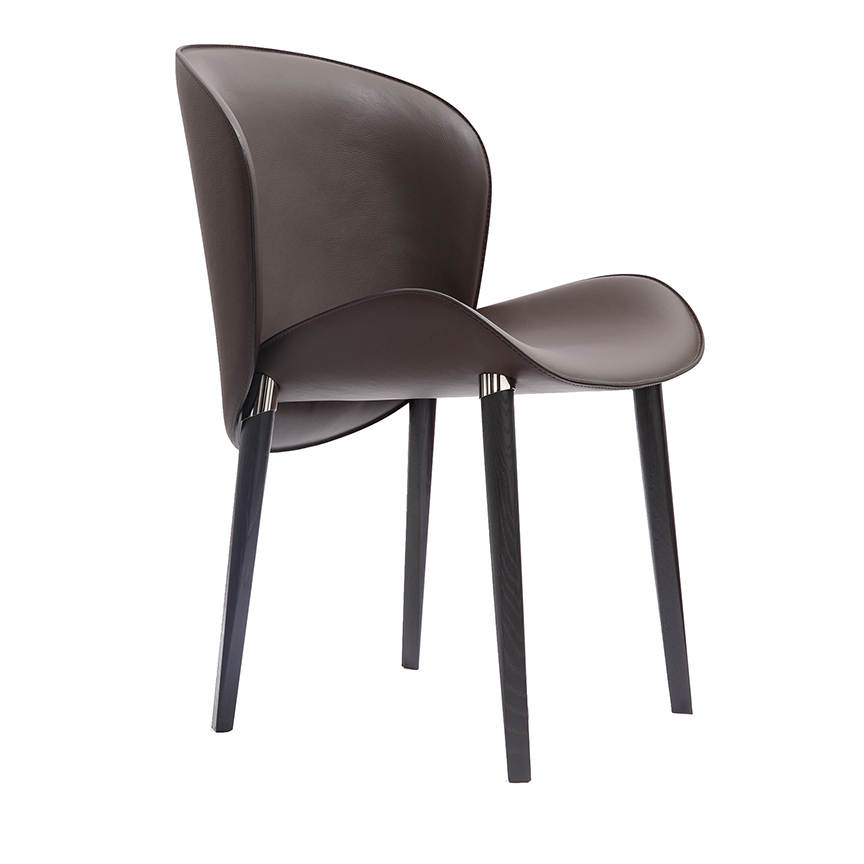
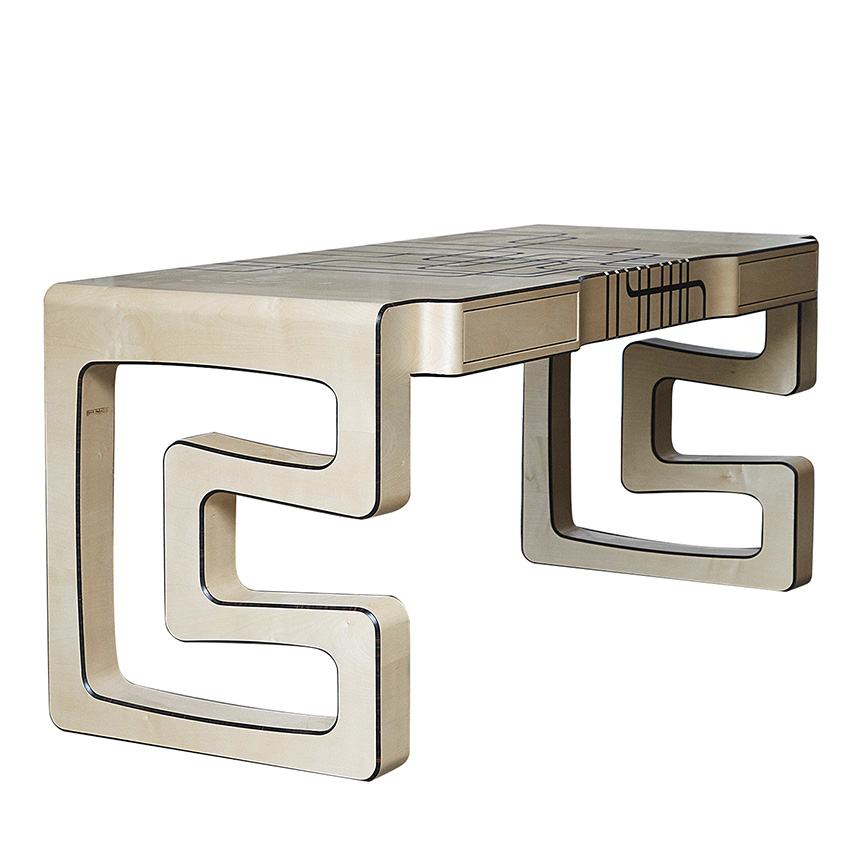
Living Objects is about bringing life into a space or home. Each piece of furniture and décor has a soul, which will be revealed through the poetry of their movements, infusing life into the house with a series of performances. “This year we have chosen to create an immersive experience that mixes design, art, music, and theater with a touch of technology. As international ambassadors of Made in Italy, it is our mission to provide as many tools as possible to promote the uncompromising quality of which our country is a world leader,” according to Marco Credendino, Artemest Co-Founder and CEO.
The furniture has a unique fluidity to them. The mixture of lines that are rarely simple and the variety of textures will urge guests to explore the items more closely. From the Mosaic Dresser and Synchronicity Desk to the Julep Sofa, your senses will awaken.
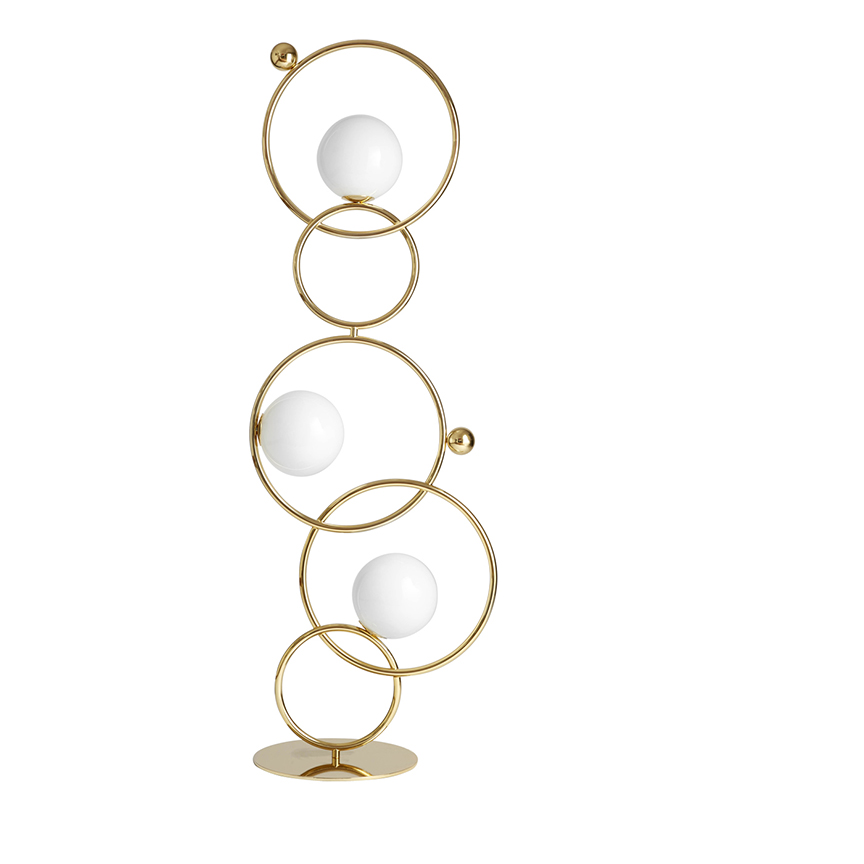
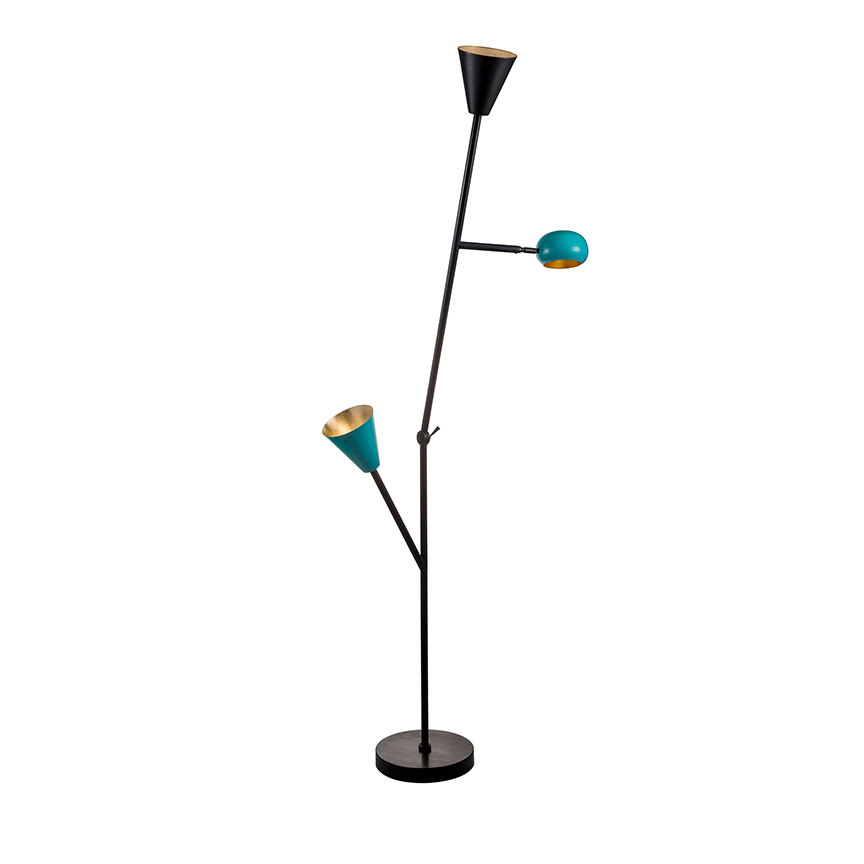
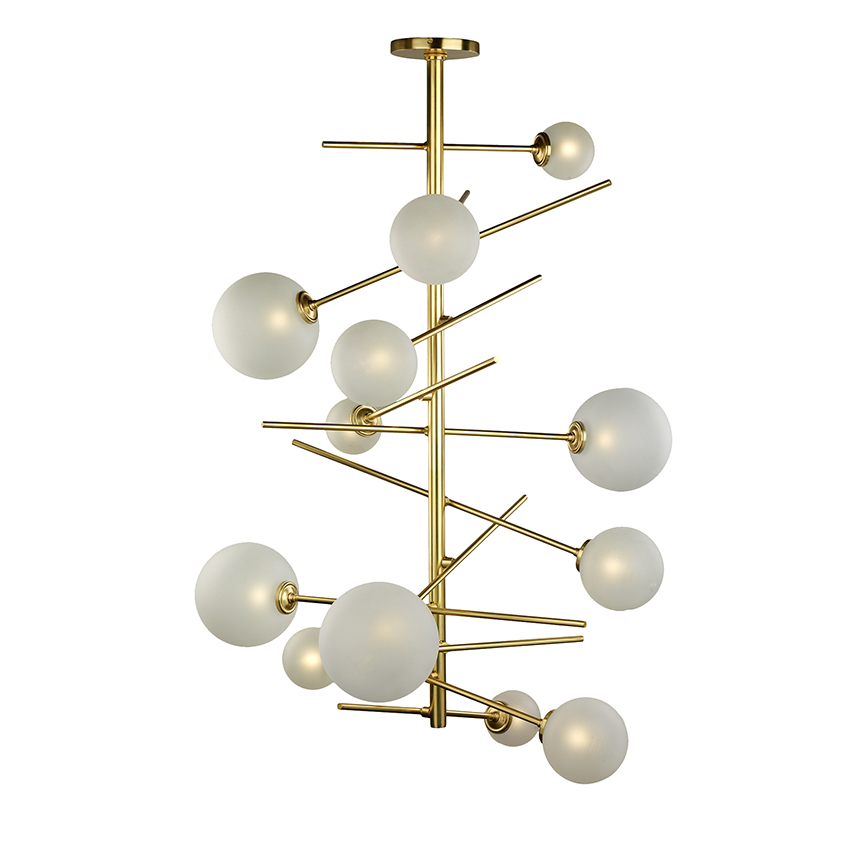
Each piece stands out on its own but they have been expertly paired and arranged to achieve a truly unforgettable home.
Living Objects will take place in Via Giovanni Randaccio 5, in a splendid 1930s villa on two floors, located in one of Milan’s most elegant residential areas.
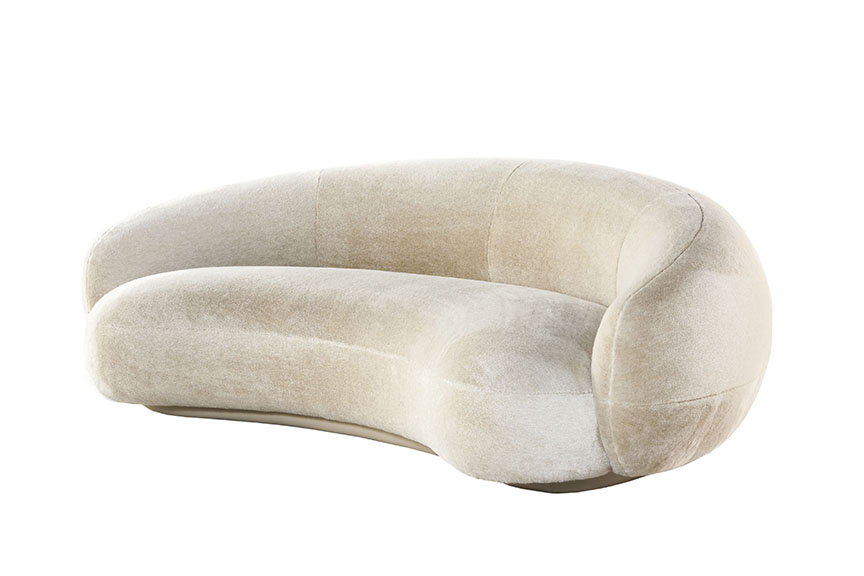
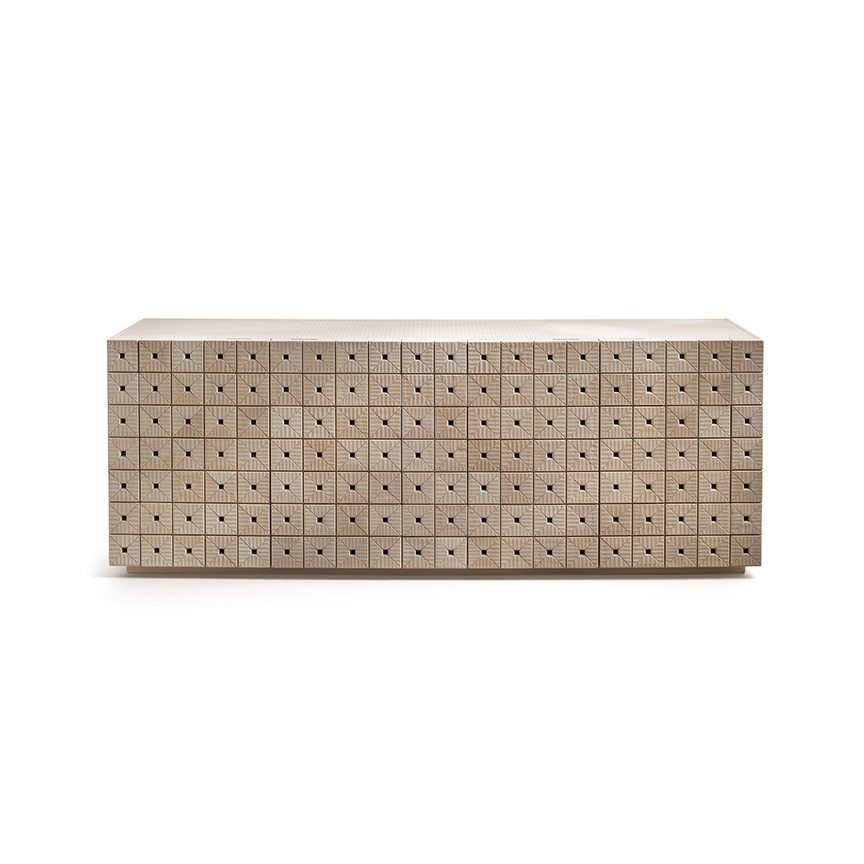
Images courtesy of ARTEMEST. Photos by Matteo Iotti.
Building on the success of some of its best-selling designs, while crafting soon-to-be favorites, HBF Textiles’s latest introduction of the Spring 2019 Collection is a double-take on its own history as it looks forward.
Featuring six fabrics, including two reissues of popular brand classics, the brand looked to the individual patterns present within fibers to craft a tactile, visual collection. Unique weave constructions are utilized with matelassé, knotted cord floats, waffle weaves, and a well-worn saddle leather, making Spring 2019 a multi-dimensional line that closes the gap between new and old, classic and original.
“Our Spring 2019 collection is a reimagined look at HBF Textiles’ history and where we’re headed,” explains Mary Jo Miller, HBF Textiles VP of Design & Creative Direction. “The line combines some of our most memorable textiles with modern, distinct designs to create something entirely new. Spring 2019 looks boldly ahead while still managing to feel timeless, classic, and thoughtful.”
Two updated classics, Honest and Moving Forward, prove their enduring design with modifications and additions that embrace their roots.
Moving Forward
First launched as “Moving Blanket” by Elodie Blanchard for HBF Textiles in 2014, the renamed textile Moving Forward was inspired by the beauty of a moving blanket draped over a piece of furniture, translated into upholstery. The 2019 version offers neon fill yarns for an added pop of color and original look.
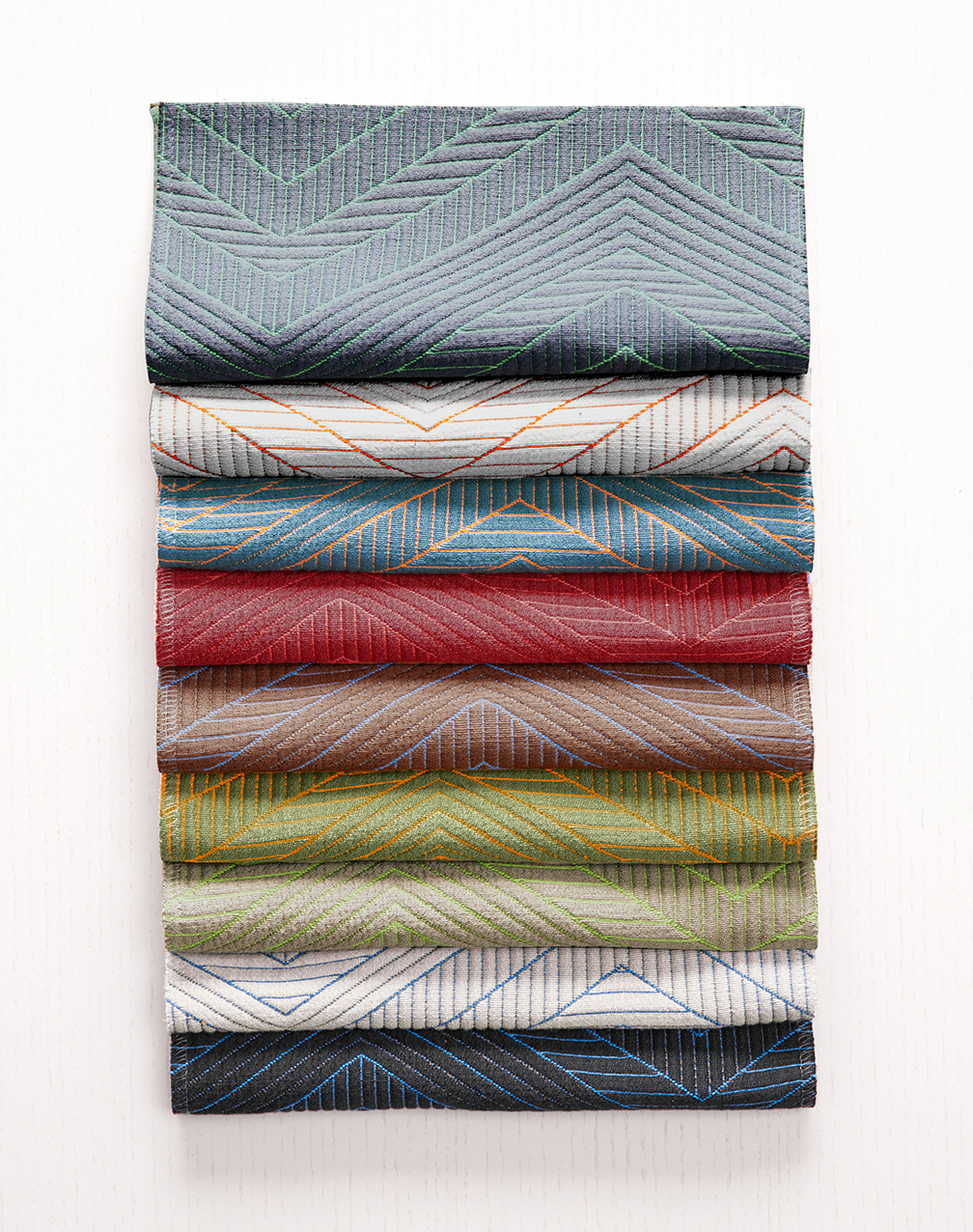
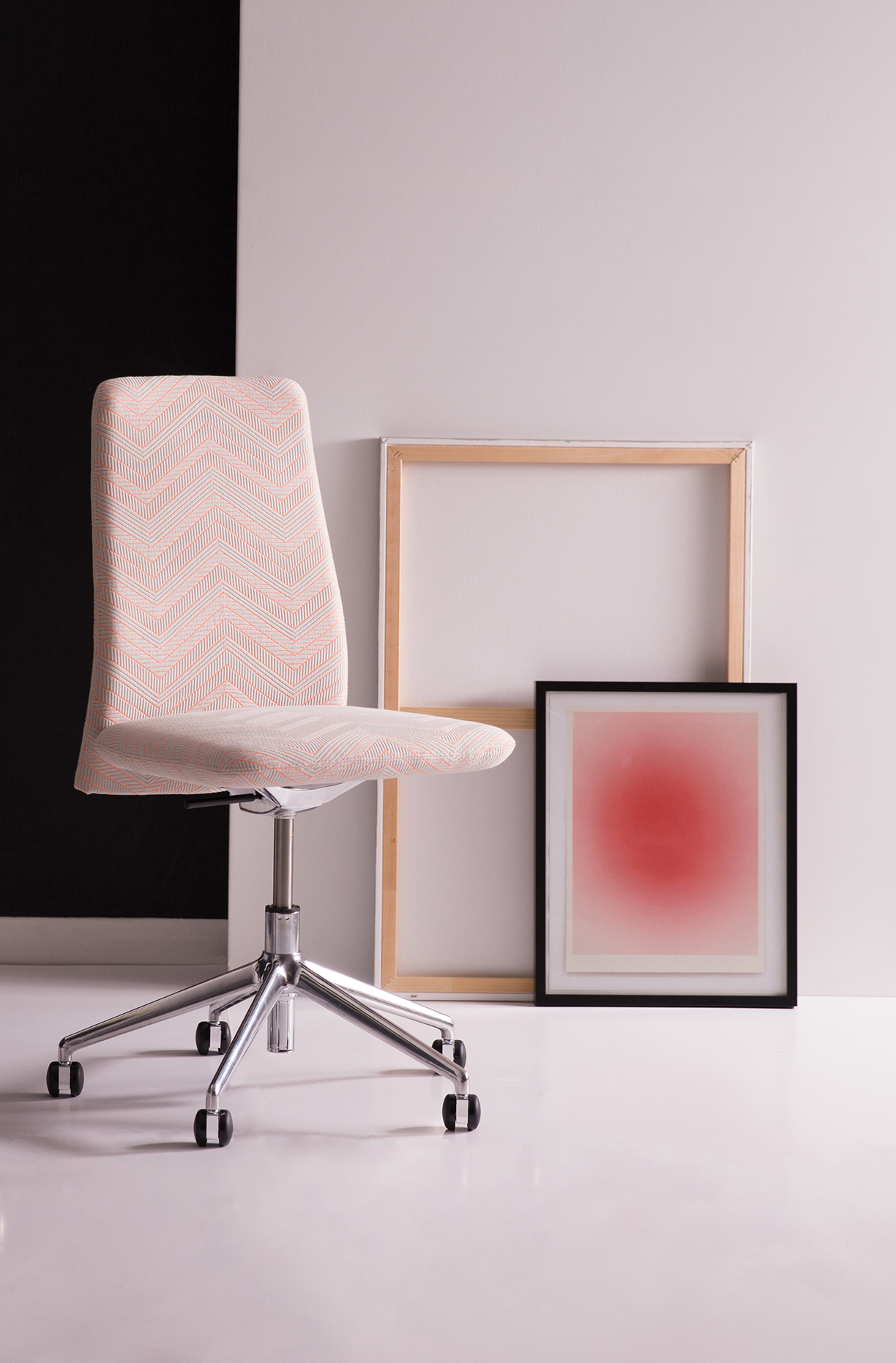
This textile takes the original artwork from Elodie Blanchard’s ‘Moving Blanket’ and propels it into a vibrant, new direction with neon weft yarns peeking through the matelassé pockets. The fabric comes in nine dynamic iridescent hues with a stain resistant finish.
Honest
For Honest, first released with Christiane Müller in 2016, a fresh range of modern, heathered colors add depth to this timeless pattern and expand on its initial design. Woven at a family owned mill in Italy, Honest features a hybrid of fibers that when blended look and feel like a soft wool blanket. It’s featured in eight heathered combinations, as well as the original 10, for a total of 18 colors that impart depth and clarity.
The Honest color family is also growing! New exciting shades from Christiane Müller are expanding this simple and beautiful solid texture.
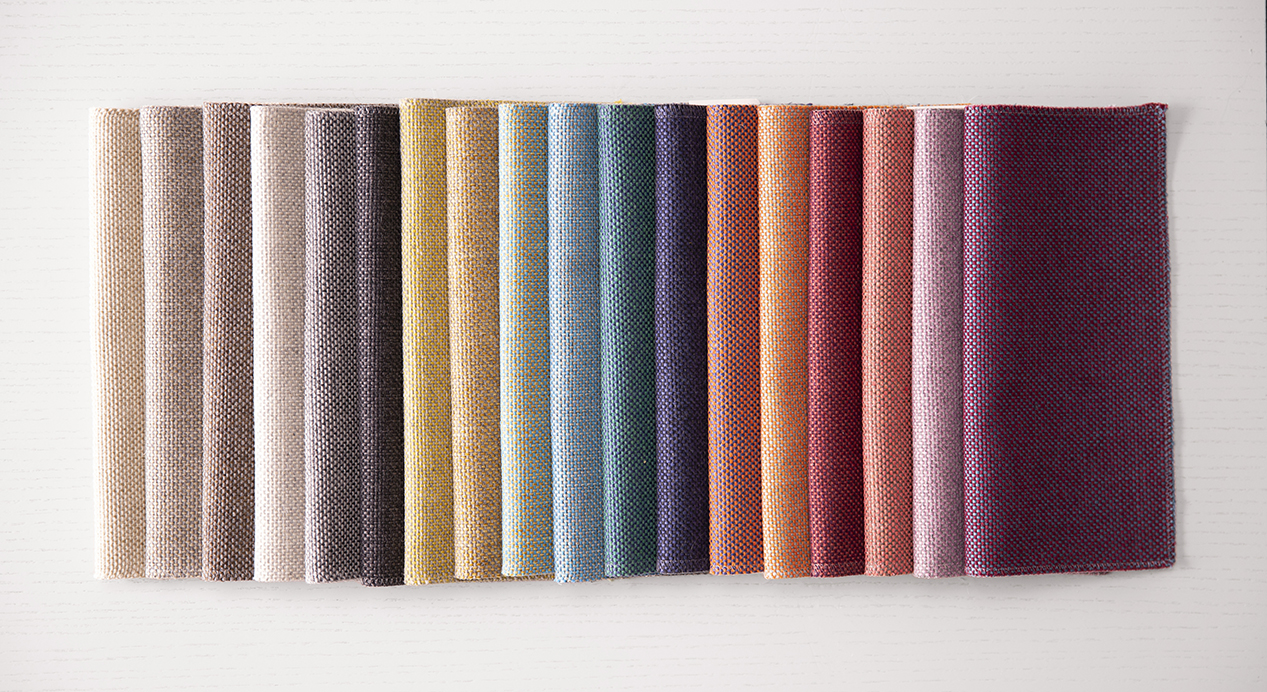
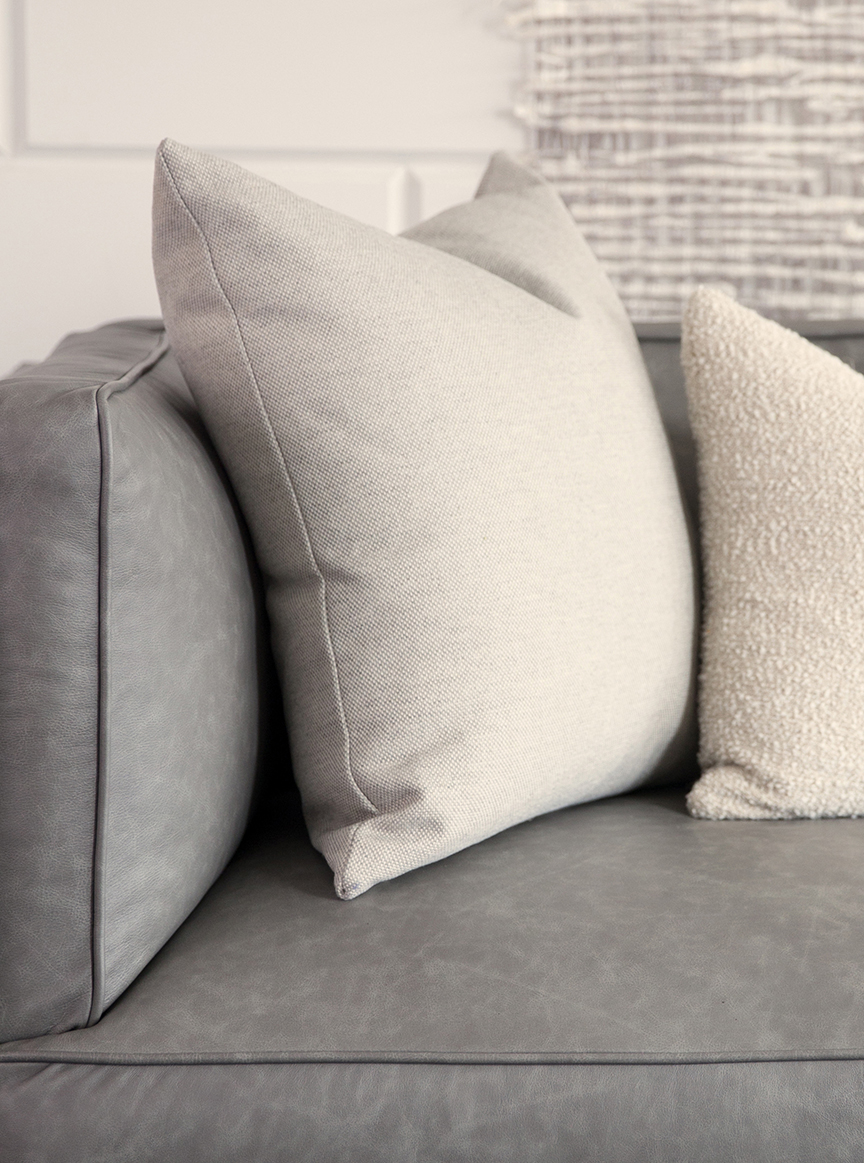
The four new additions to the HBF Textiles family — Grateful Grid, Wild West, Caddy Corner, and Vault Lights — bring liveliness and diversity to the collection through bold grids, distressed leather, small-scale angles, and geometric patterns.
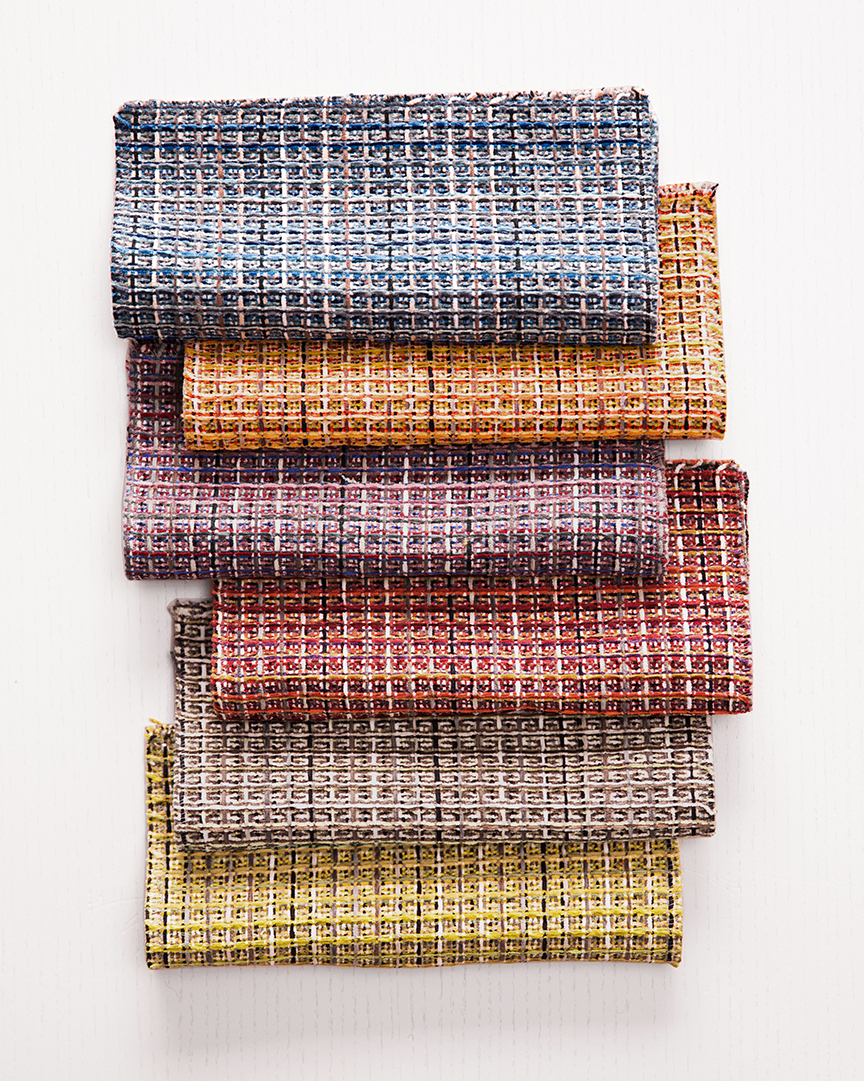
Grateful Grid
Crafted at an intimate mill in Germany where chenille is the dominant fiber type, it’s easy to feel grateful for this bold grid weave comprised of soft chenille yarns.
Grateful Grid is a waffle weave structure which allows air to flow and sound to be captured. The six vibrant shades are named for the first word in a variety of Grateful Dead song titles.

Caddy Corner
Kitty Corner, Catty Corner, Cattywampus — whatever works for you on the diagonal.
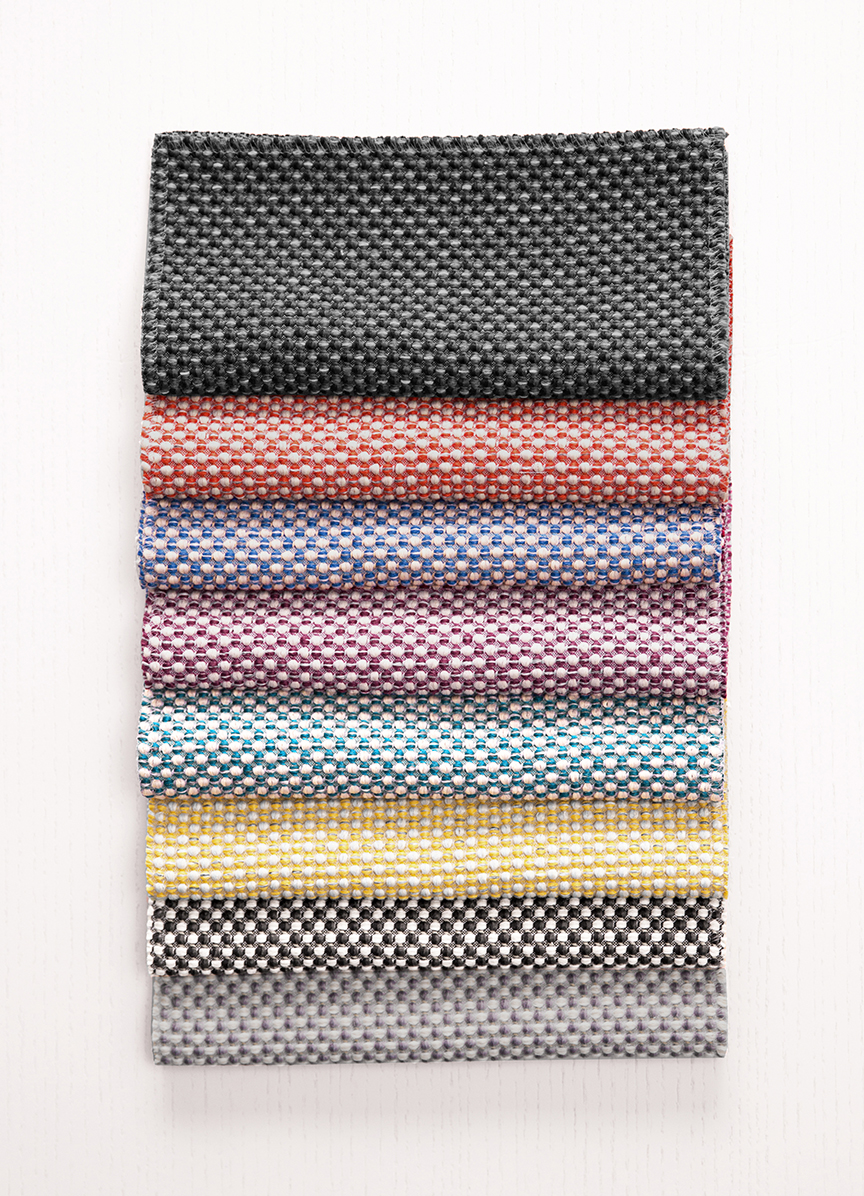
Caddy Corner is the odder spelling and takes it cue from small scale 45-degree angles. The eight multi-hued fabrics all showcase playful colors, while remaining composed of 58.5 percent post-consumer recycled polyester — one of the brand’s most sustainable fabrics.
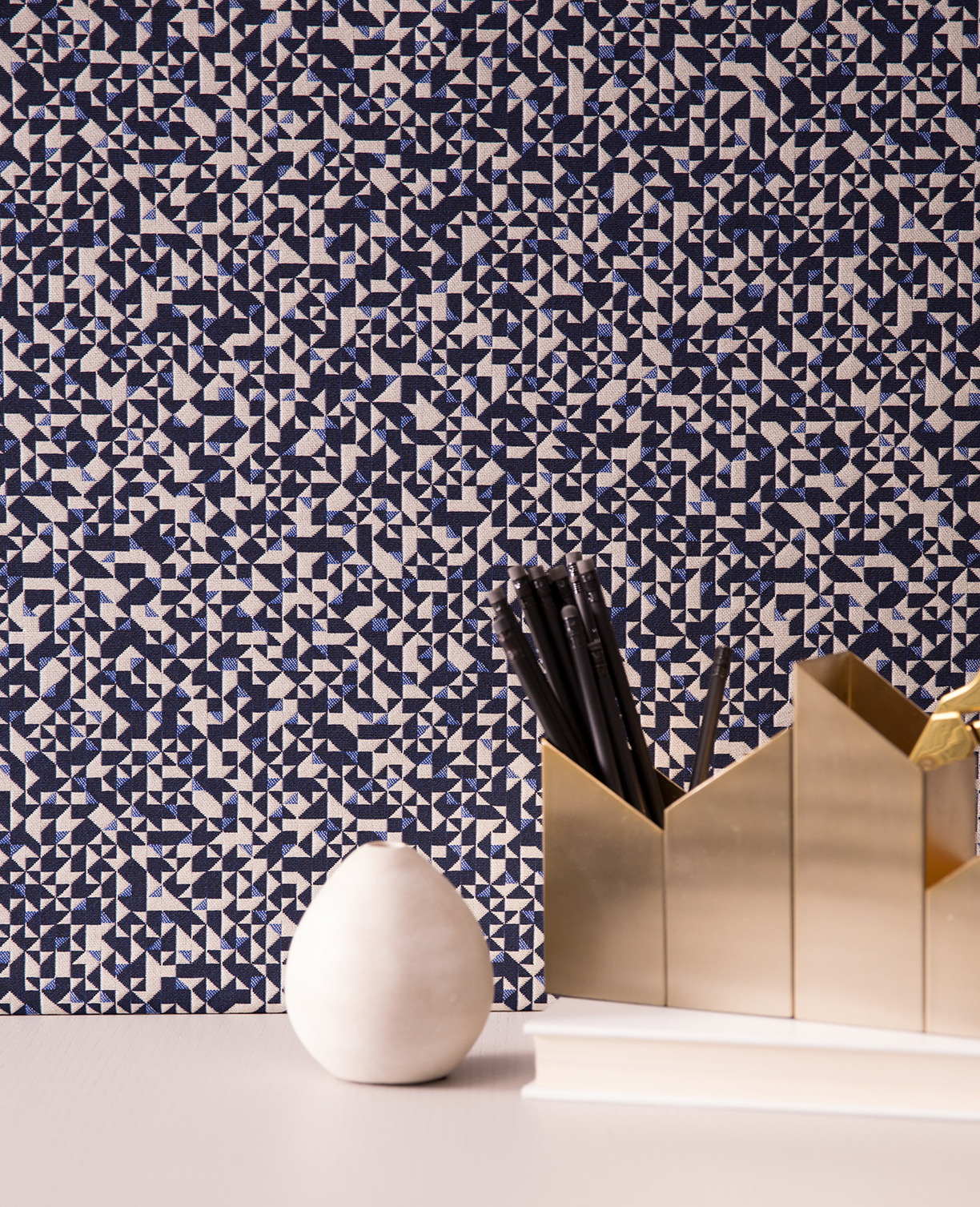
Wild West
Wild West’s distressed leather features a scratch-resistant surface with a matte finish, like a well-worn pair of cowgirl boots. The finish allows it to be specified for high traffic areas, while showing off a chic, marbled, crackled appearance. There are six complex shades, each named for a famous cowgirl from early western classics.
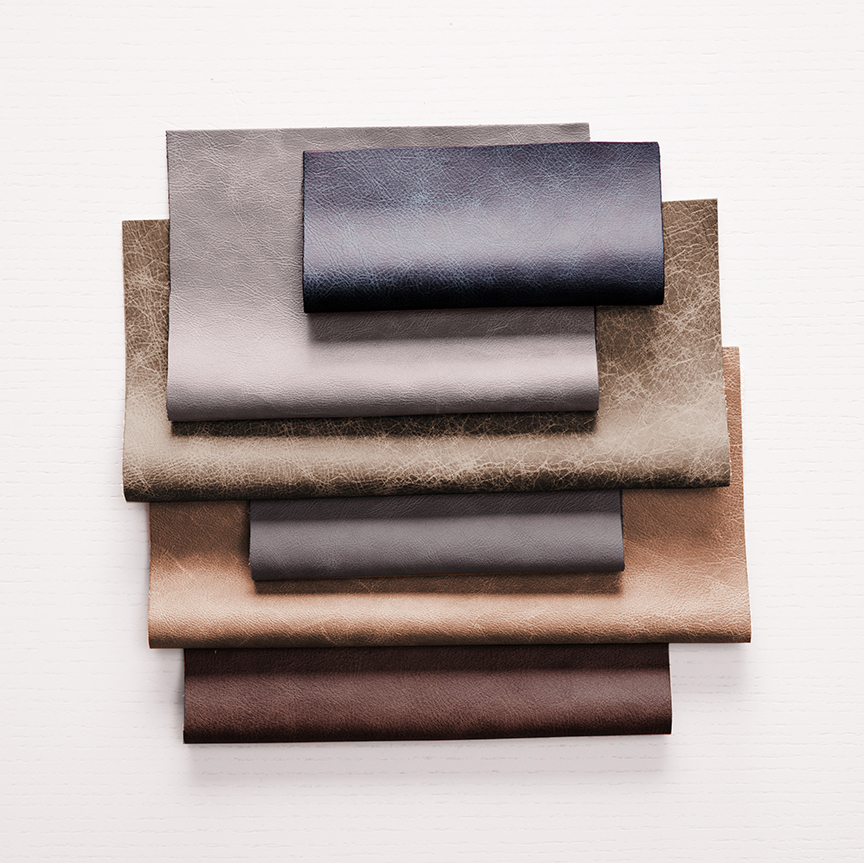
Vault Lights
Vault Lights was inspired by the geometric refraction of skylights with their bumpy quality and jewel-toned hues. Woven in Germany, the textiles come in eight luminous colors that represent the look and dimension of light prisms through glass.
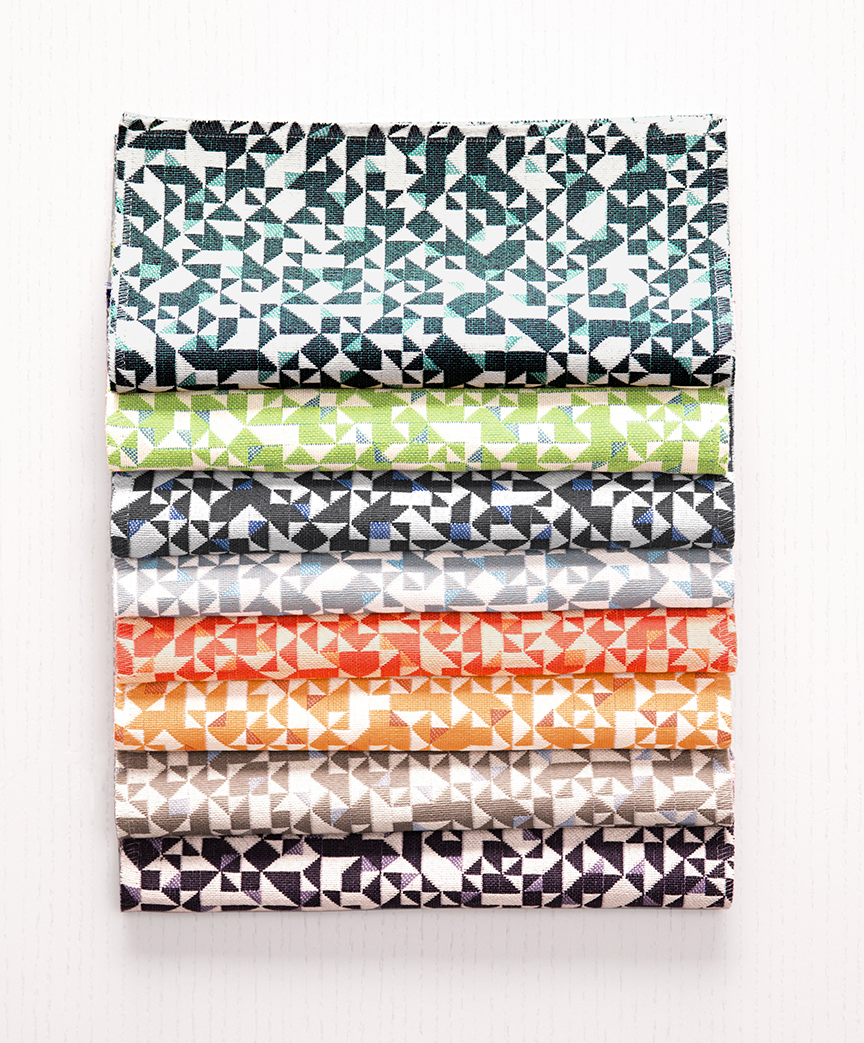
Images courtesy HBF Textiles.
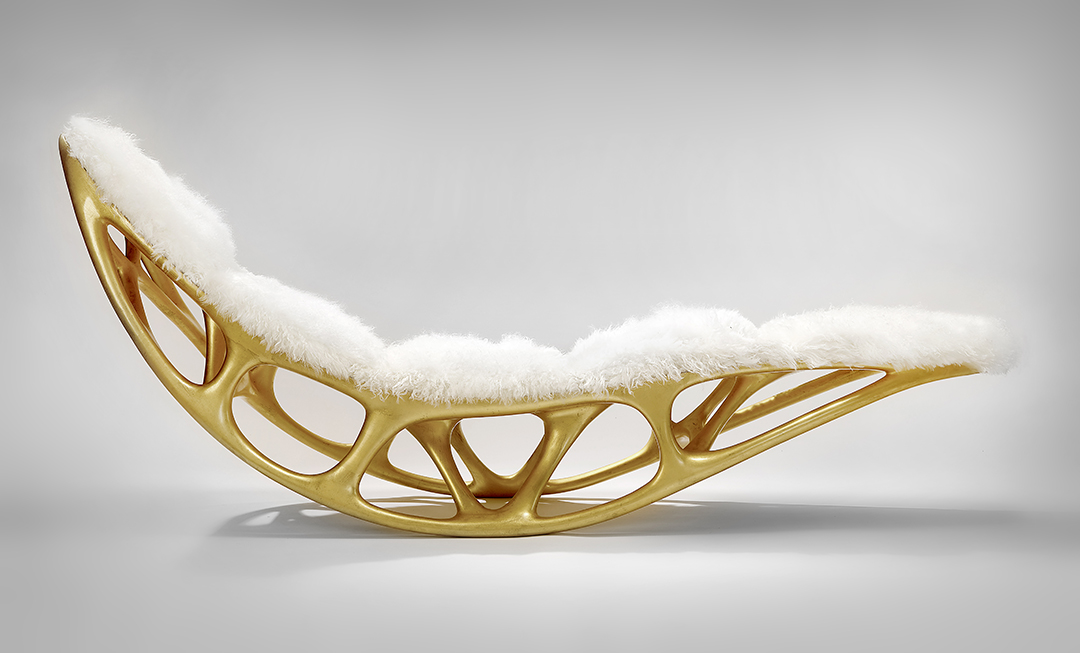
Being trained originally as an architect in Germany and London and having worked with one of the most iconic architects of the 20th century, Zaha Hadid, designer Timothy Schreiber reached what he calls “the center of the universe” in terms of digital design and technology very early on in his career. Though highly driven by today’s advancements in digital technology, Schreiber discusses how his designs are actually the outcome of a wide assortment of influences, even more traditional practices such as cabinet making and woodworking.
What about this particular version of design is most attractive to you, and to others?
I always like a new challenge and trying something completely new that nobody has done before and I hope others will also enjoy the freshness and new-craft aspect of my work.
Where would you draw inspiration from?
For me personally, I can draw inspiration from any beautiful moment.
When I walk through Kyoto I might have some great ideas by looking at the beautifully dressed locals and the amazing scenery and traditional architecture.
When I see the sunset behind the Diamond Head in Hawaii while swimming in the pacific I might have some new amazing ideas for colors, moods or shapes.
While I am walking up Montmartre in Paris some great eclectic ideas might come up while I stroll a secondhand market and see a broad mix of items from different eras like Beaux Arts, Art Deco or Art Nouveau.
How do you think the presence of digital tools/technology has changed design over the past few decades? How do you use these tools in your own work?
Whilst in the design department of Zaha Hadid, I realized that, although the latest digital design tools might be used there, without a fundamental understanding of traditional craft it’s actually extremely difficult to achieve perfection in object or furniture design. … I am hoping I can push the symbiosis of traditional and digital design and making process to the next level. However, the most important aspect of my work will always be the focus on traditional craft.
What do you think you try to achieve through your collection/these pieces, i.e. what is the goal when it comes to your work?
I am aiming to push the boundaries in terms of what is possible and in terms of what hasn’t been done before, whilst combining new and old crafts. I like to work in many different materials, metal, glass, wood, fur, etc.
Sometimes, during my travels I find interesting traditional crafts and technologies. For example while I was living in China I got introduced to traditional Chinese Glass casting. The projects that were done with this technology were mainly traditional glass statues and figurines… After a lengthy process of experiments and tests we were able to push the boundaries here and make a piece of cast glass furniture which was almost twice the size that any other object that was previously cast there.
What do you think are some key things to remember when outfitting a home?
God is in the details.
Does your mind focus on a specific space in a home or space when you design, or on something else?
I was trained in multiple disciplines, cabinet making, architecture and interior design. My first 3 years in architecture college I spent at Bauhaus University in Germany. … I like to always focus on all spaces and all aspects of the design, from concept to detail, and I equally enjoy dealing with all spaces and aspects of the current job.
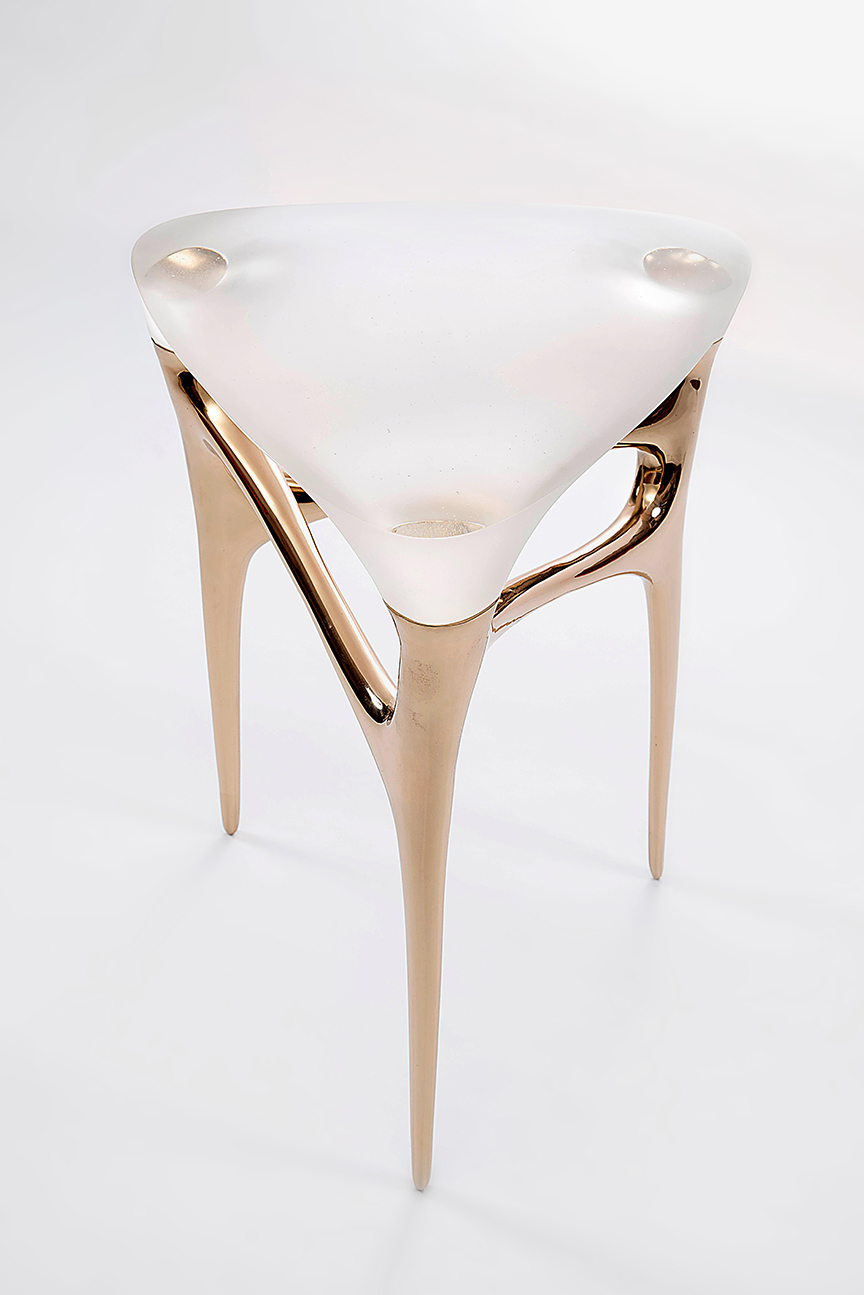
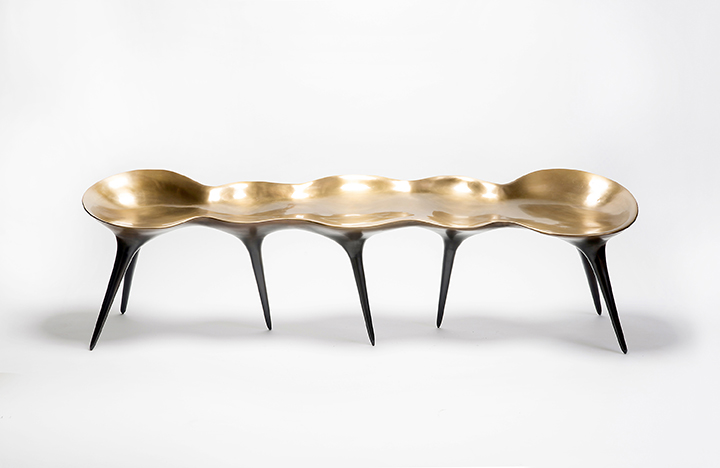
All photos by KeneK Photography, courtesy of Wexler Gallery.
Mid-Century Mountain — Barclay Butera Interiors is touting a new and exciting genre of style that perfectly suits Colorado’s Snowmass Base Village.
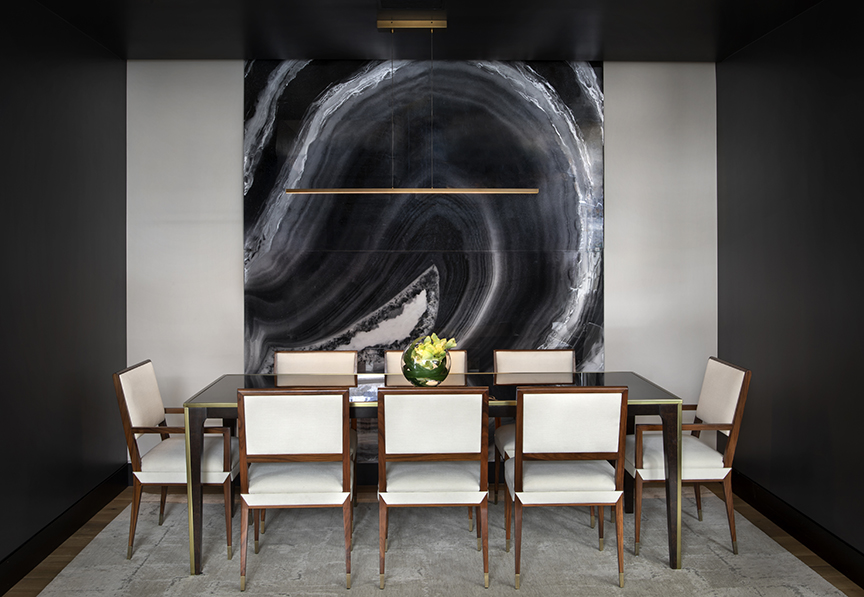
“This model residence lives like a cozy mountain chalet with a touch of the Barclay Butera signature glam,” said Mario Ferreira of Barclay Butera Interiors. Set against the backdrop of Snowmass, with its ski slopes and stunning nature, the newly discovered style is bound to attract attention. “These model residences are a study in contrasts, providing a canvas that inspires our homeowners and highlights the possibilities for making the residence their own,” added John Calhoun, the vice president of sales and marketing for East West Partners.
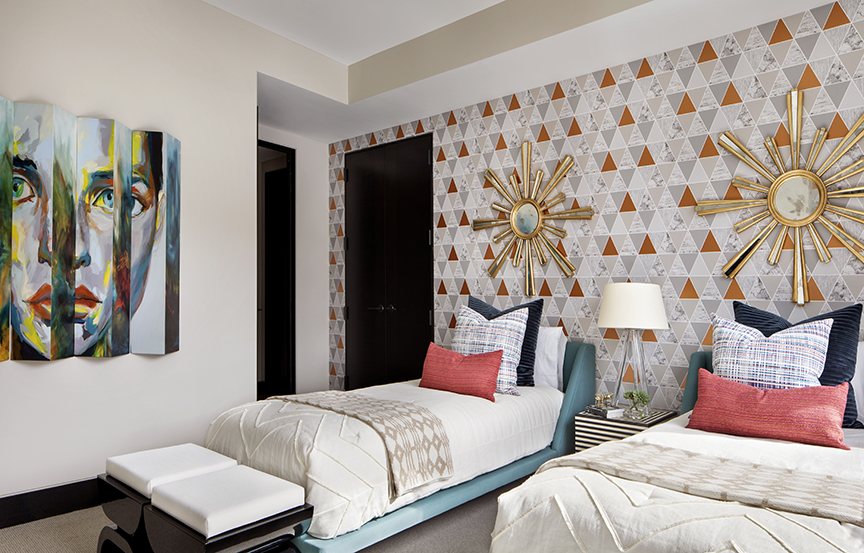
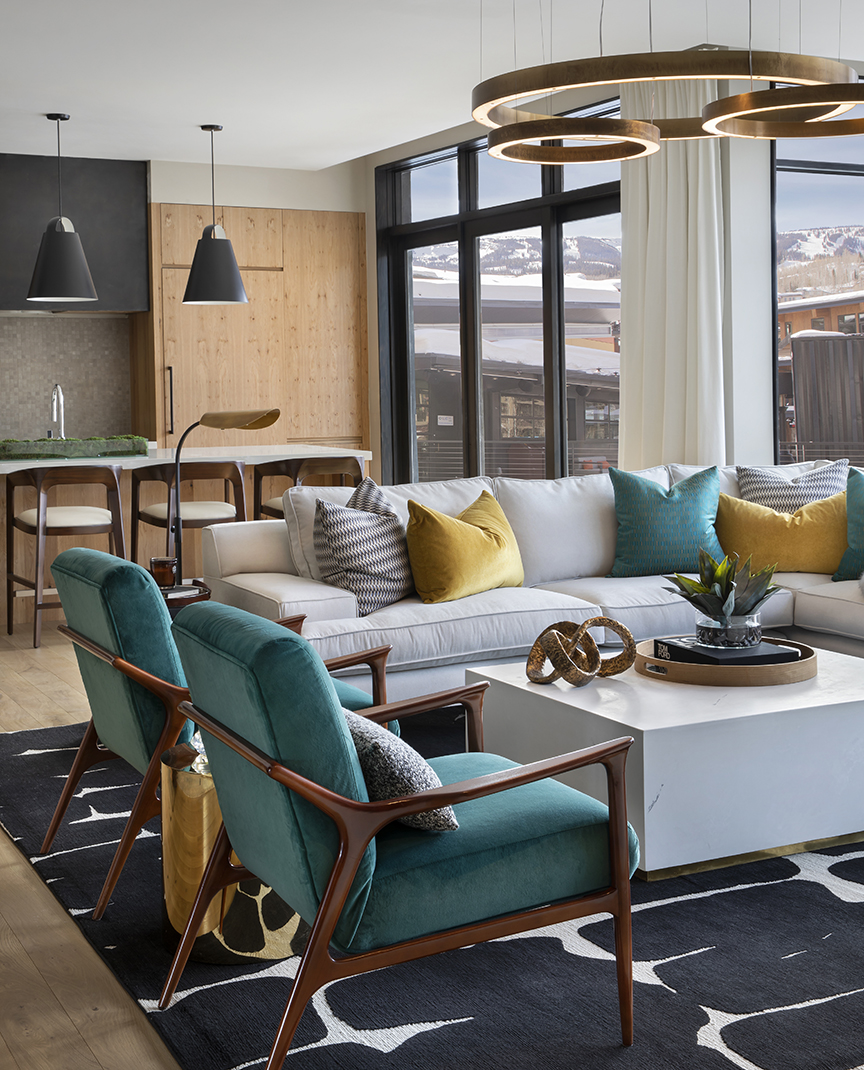
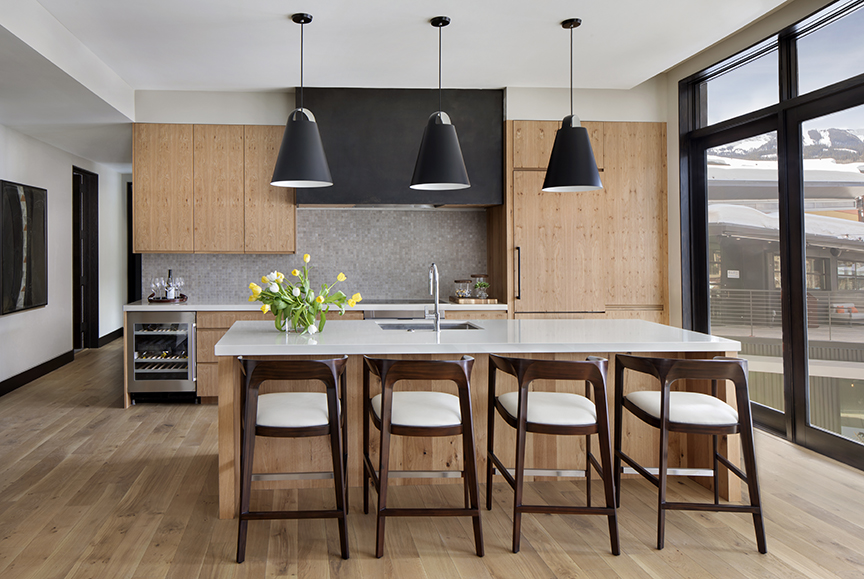
— Greenery showcased in a clear, glass vase is a simple addition that makes all the difference in a room.
— Various wooden surfaces are a smart way to mix textures and colors without feeling disconnected.
— A mix of softer colors and muted tones create a very nature-like, calm atmosphere.
— Subtle pops of color mimic the small splashes of color that are also found among the mountains.
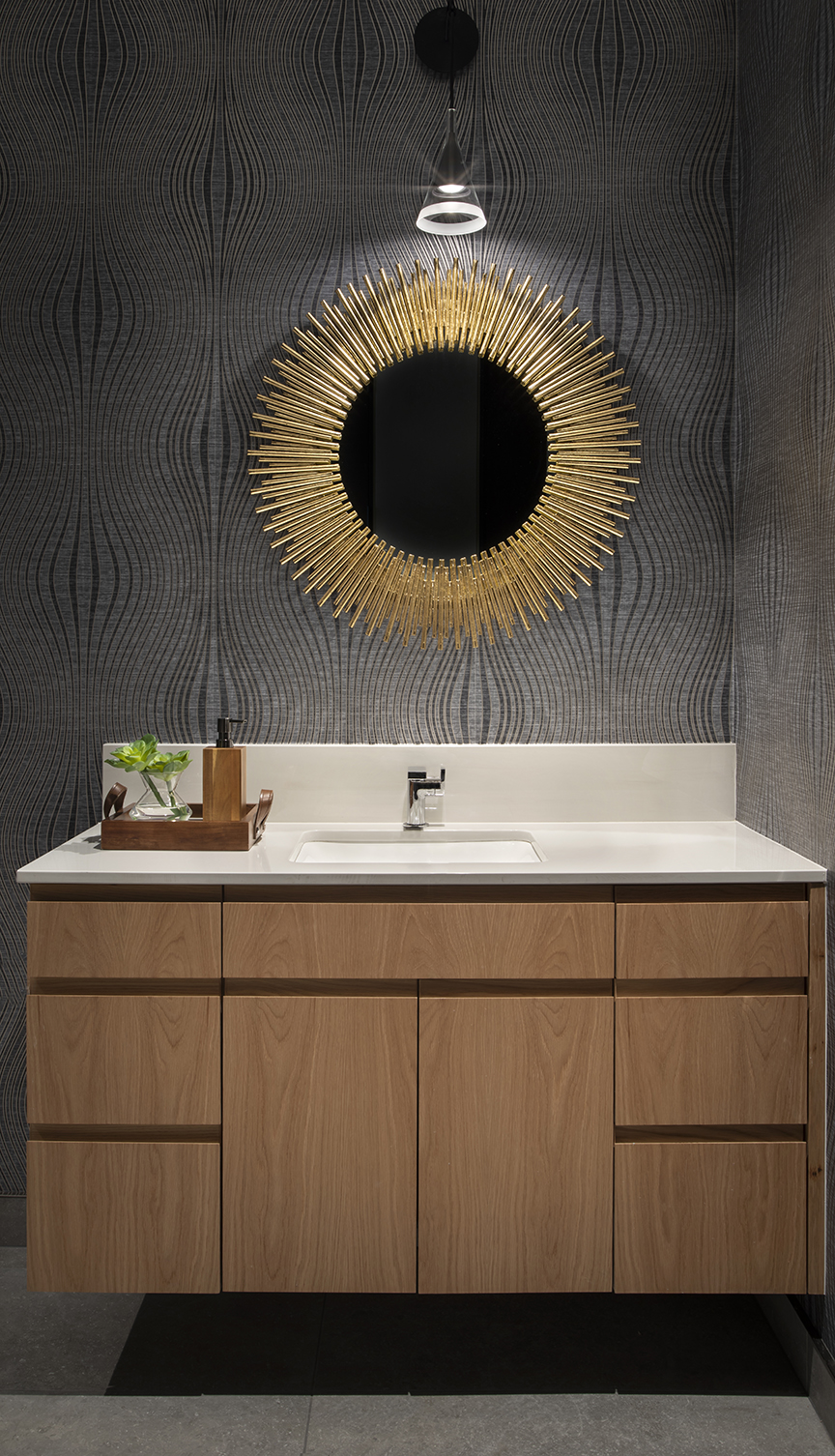
Photos by Gibeon Photography
Bring fun and function to your outdoor space this spring with three collections from Vondom, by Eero Aarnio. Modern shapes and unique fun concepts are combined to make up the Roulette, Rosinante, and Peacock collections.
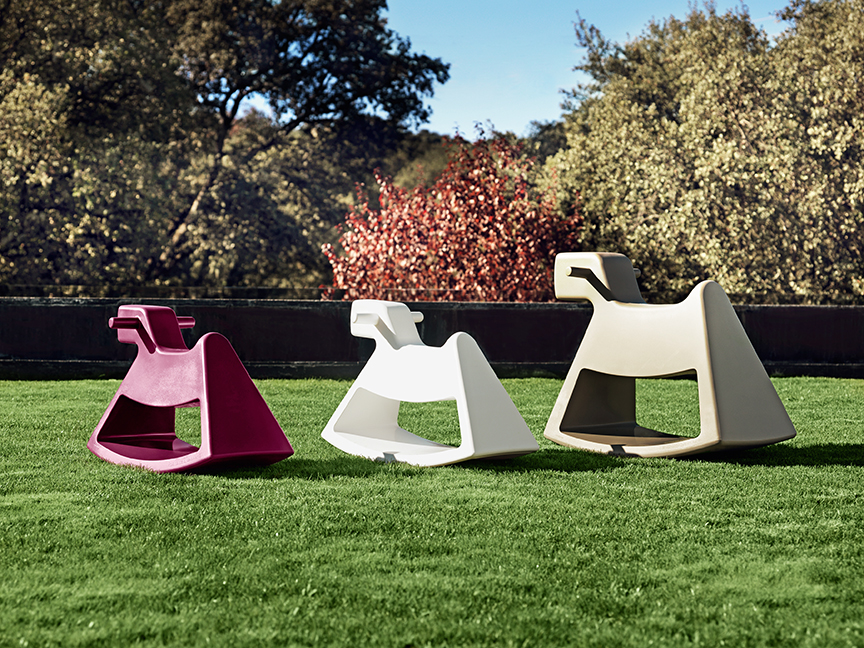
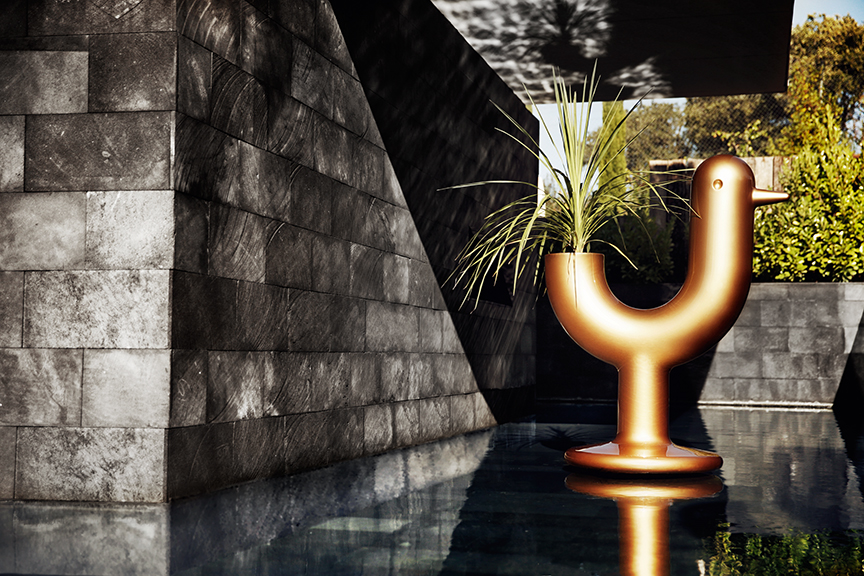
Eero Aarnio, the mastermind behind these designs is described as a “plastic pioneer master and a living legend of modern design,” according to the Vondom website. Aarino has been a freelance designer since 1962, and his iconic designs continue to inspire today.
Rosinante Collection
The Rosinante collection was inspired by the fascinating world of carousels and Ferris wheels. The whimsical nature of the rocking horses makes them perfect for families. With sleek lines and modern colors, the designs are equally as fun as they are sophisticated.
Traditionally a rocking horse only rocks back and forth, but this horse has a base which also enables users to spin. Because the horse was made in Spain, it was naturally named after Don Quixote’s world famous horse, Rosinante.
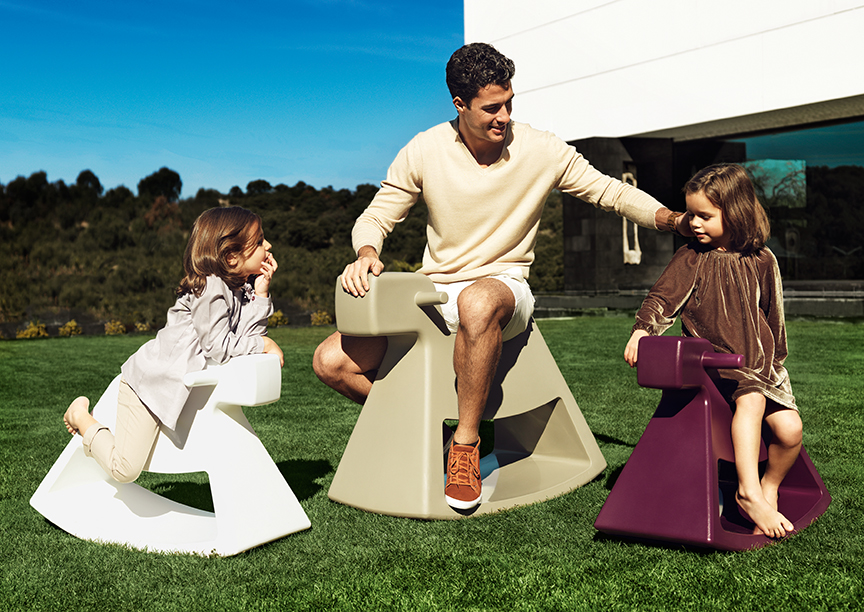
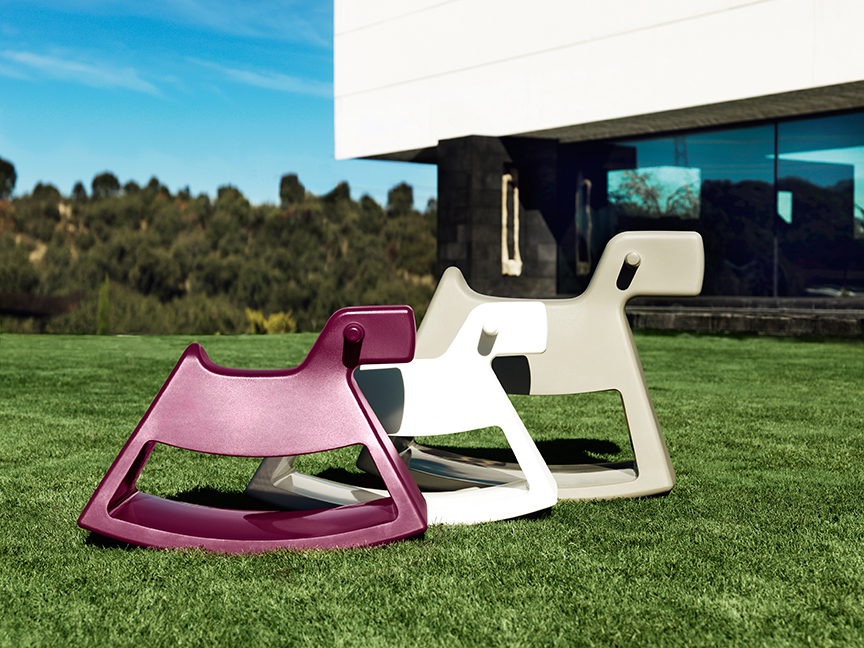
Another lighthearted collection by Aarino is The Roulette Collection. These undeniably bold chairs are perfect for a relaxed gathering or an afternoon outside. The designer had a concept of the chair’s leg being part of the body in his mind. Aarino ended up with a design that rocks in all directions and also spins because of its contact with the ground at one point.
The high armrests give a sense of security when spinning the chair around and also provides support while sitting. Wanting to find an international name for the chair, which also would immediately give the association for the spinning motion, Aarino ended up with the name ”Roulette.”

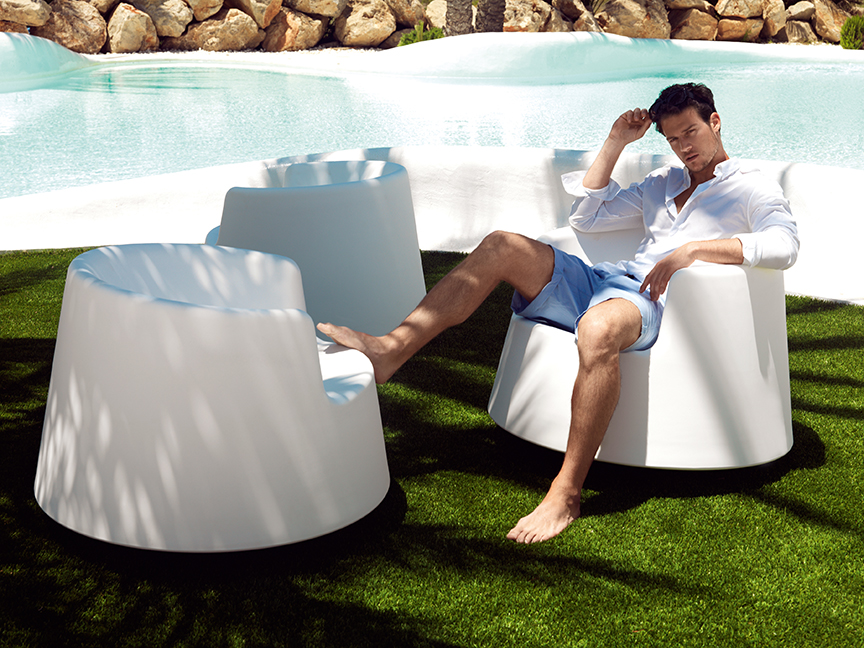
The Peacock collection fits in perfectly among Aarino’s other designs or stands alone to make a adventurous statement. The planter is in the shape of a peacock but the image isn’t complete without the addition of a plant to serves as the tail. The collection was inspired by the designer’s own childhood memories of the animals, which fascinated and scared him.

Photos courtesy of VONDOM
Well-designed luxury garages are a far cry from the cluttered, dusty rooms where most standard vehicles are kept. For high-end homeowners, their garage upholds the elegant aesthetic found in the main home; but instead of sheltering people, the garage protects their luxury vehicles.
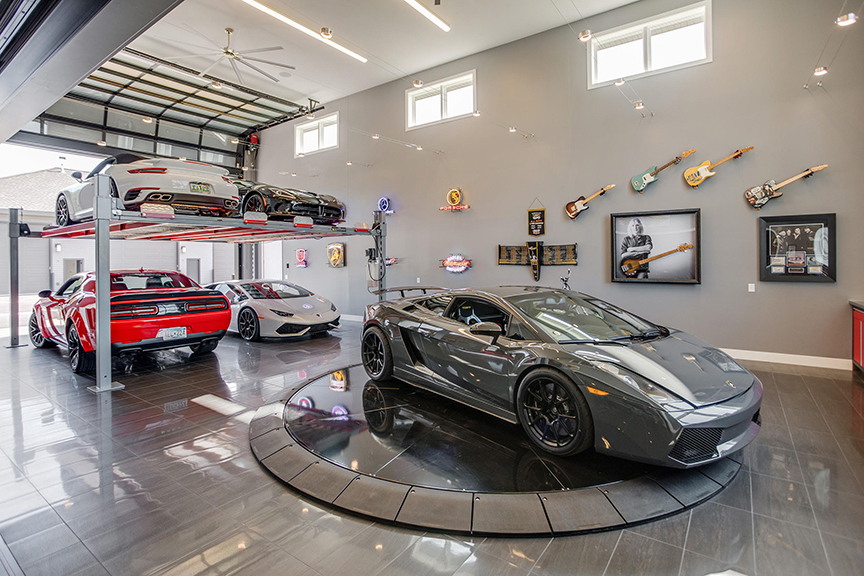
Widely considered to be the perfect extension to a dream home among car enthusiasts, luxury garages are strategically designed to show off the homeowner’s collection of vehicles and related items. Some manufacturers have developed materials specifically to be used for cabinetry in luxury garages, removing the need for kitchen-like cabinets to ruin the sleek, yet rugged vibe of the space. This cabinetry can be complimented by a stainless steel sink and counter space to increase functionality.
Slatwall panels are another popular storage strategy — they double as a finished wall covering and place to store tools and accessories. Similarly, a polyaspartic floor coating not only contributes to the polished look, but also serves as a durable protective layer to prevent damage due to abrasions, spills or moisture.
When designing a luxury garage, consider shades of blue, gray, red and black. Metallic accents, such as a diamond plate backsplash, add depth to this look. Choosing a color scheme that mirrors that of the luxury vehicles will help you achieve a put-together, distinguished design.
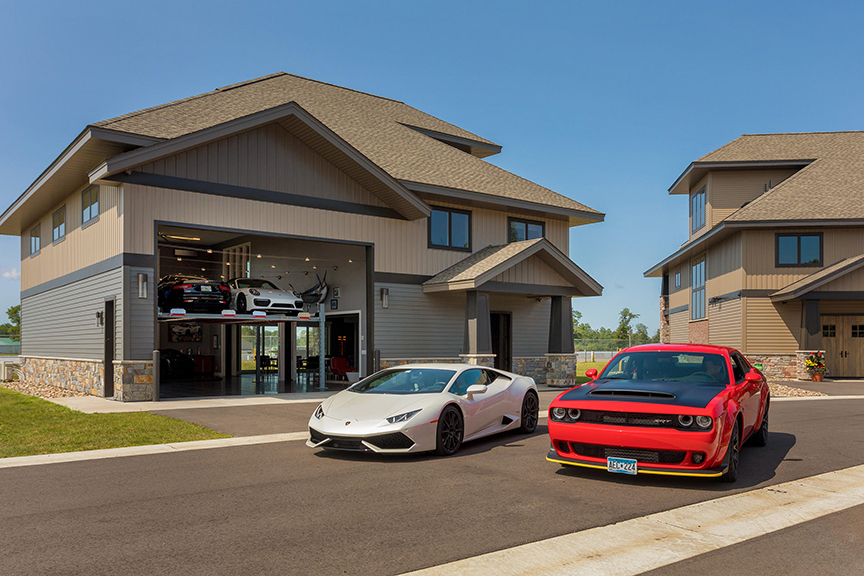
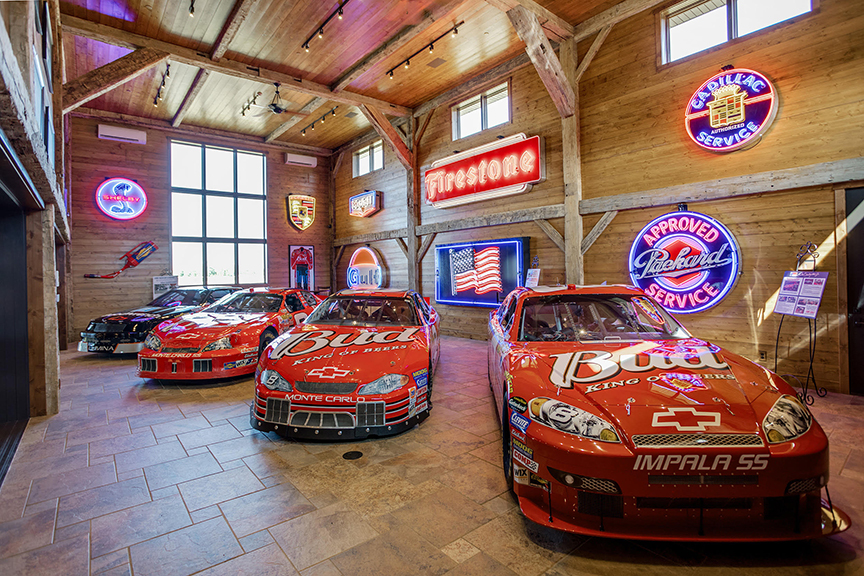
Some luxury garage owners choose to install a car lift. This can help homeowners store more vehicles in an area with limited space, or keep seasonal vehicles out of the way during the winter. Other popular amenities include upgraded garage doors that can be controlled remotely via smartphone, as well as year-round climate control. Especially in climate-controlled garages, many hobbyists choose to include a workshop, as well as a TV or sound system to turn their luxury garage into the ultimate leisure space.
Photos courtesy of BIR Luxury Garages.
Nude shades can add warmth and subtle sophistication.
Whether it be an accent piece or the color of the whole room, nude tones add subtle warmth to any living space in need of an update. Calming, earthy shades of beige, pale pink and light caramel can set a refreshing tone with barely-there hints of these trendy colors.
Nude shades work particularly well in living rooms and bedrooms, but nude-colored kitchen walls can also set a friendly and inviting vibe in contrast to past trends of gray, black and white. Since most neutral tones pair well together, shades of light pink, brown and even some very light blues can be mixed together to create your ideal wall color.
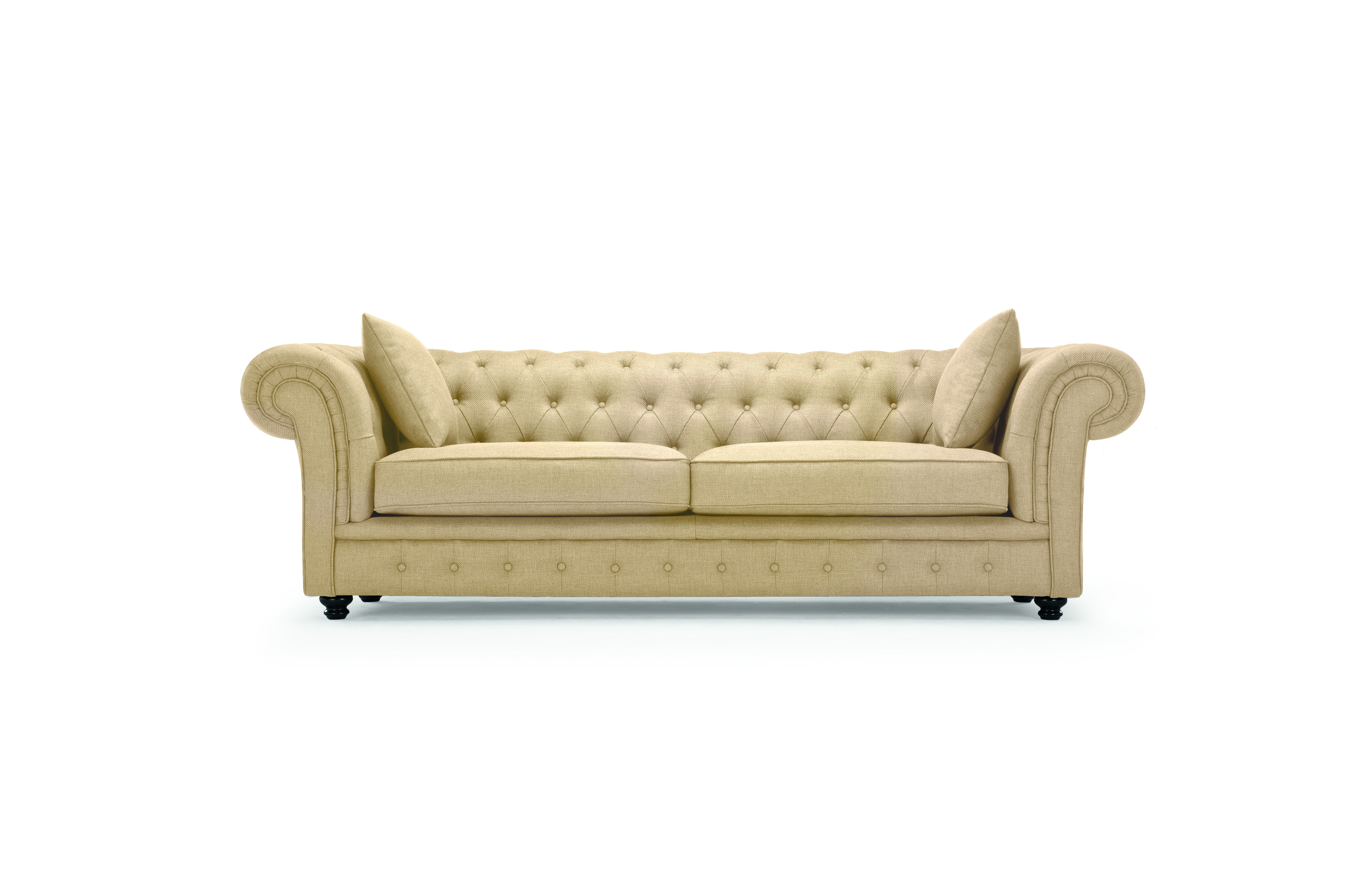
Photo by MADE.com

Photo by MADE.com.
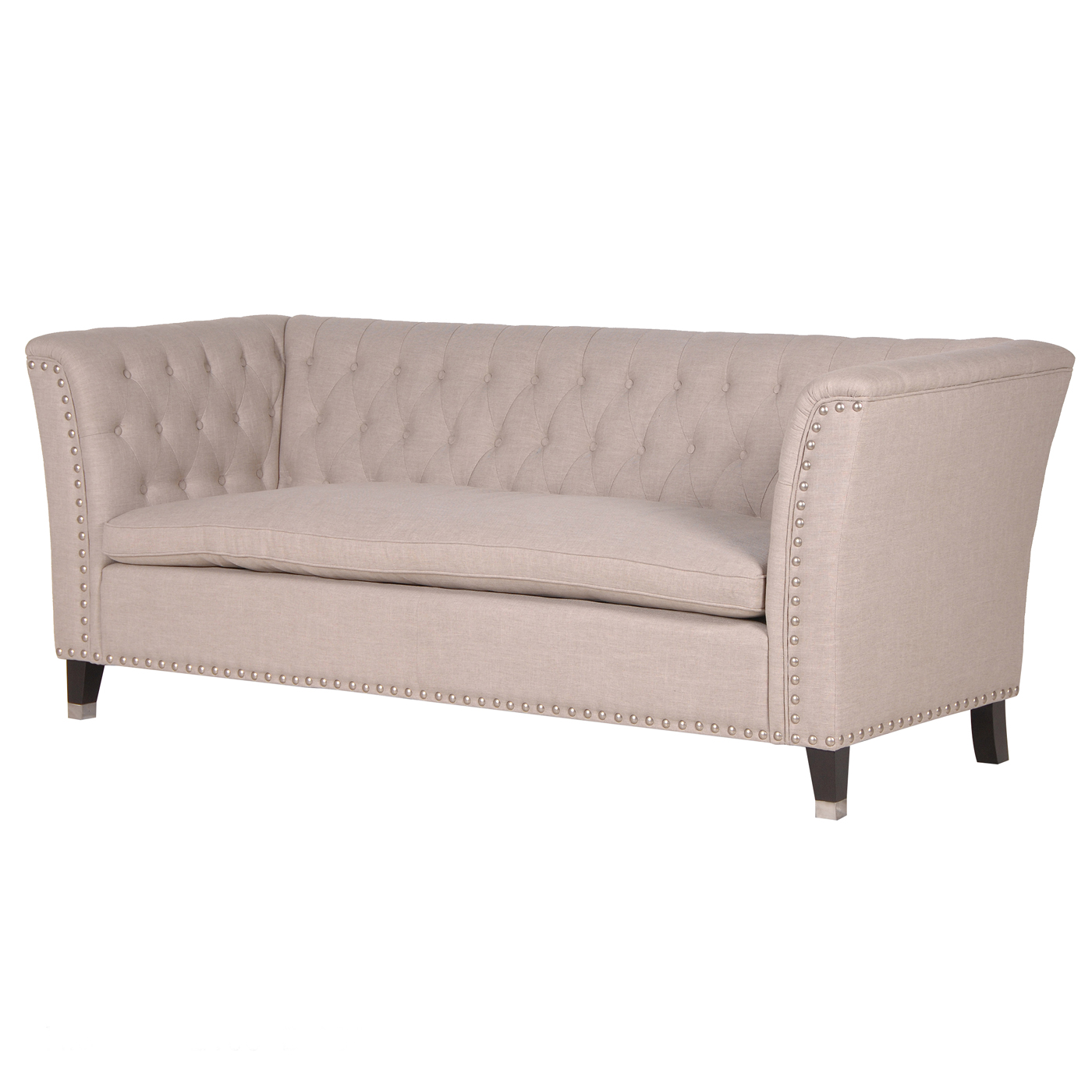
Photo by Sweetpea & Willow.
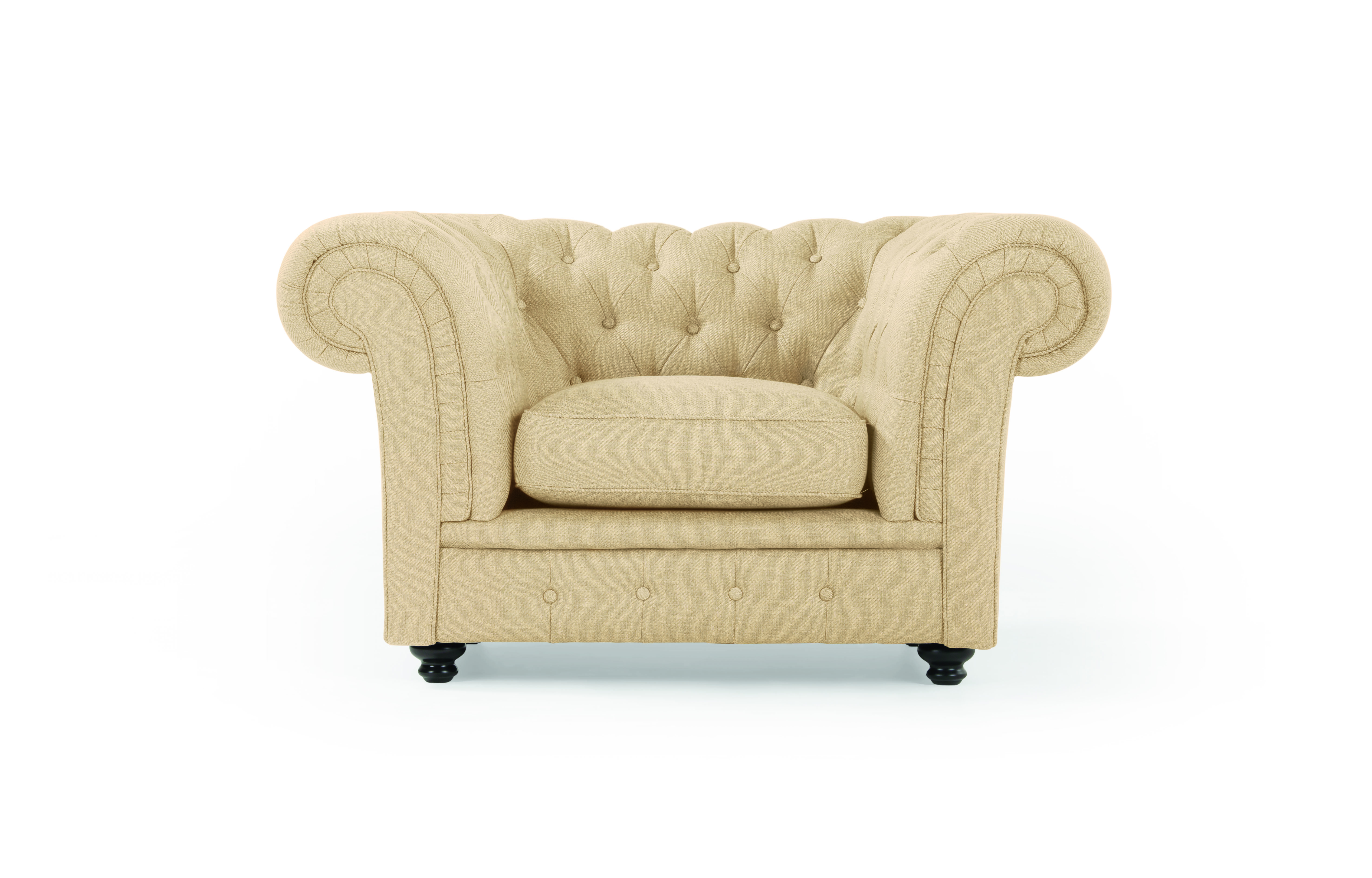
Photo by MADE.com.
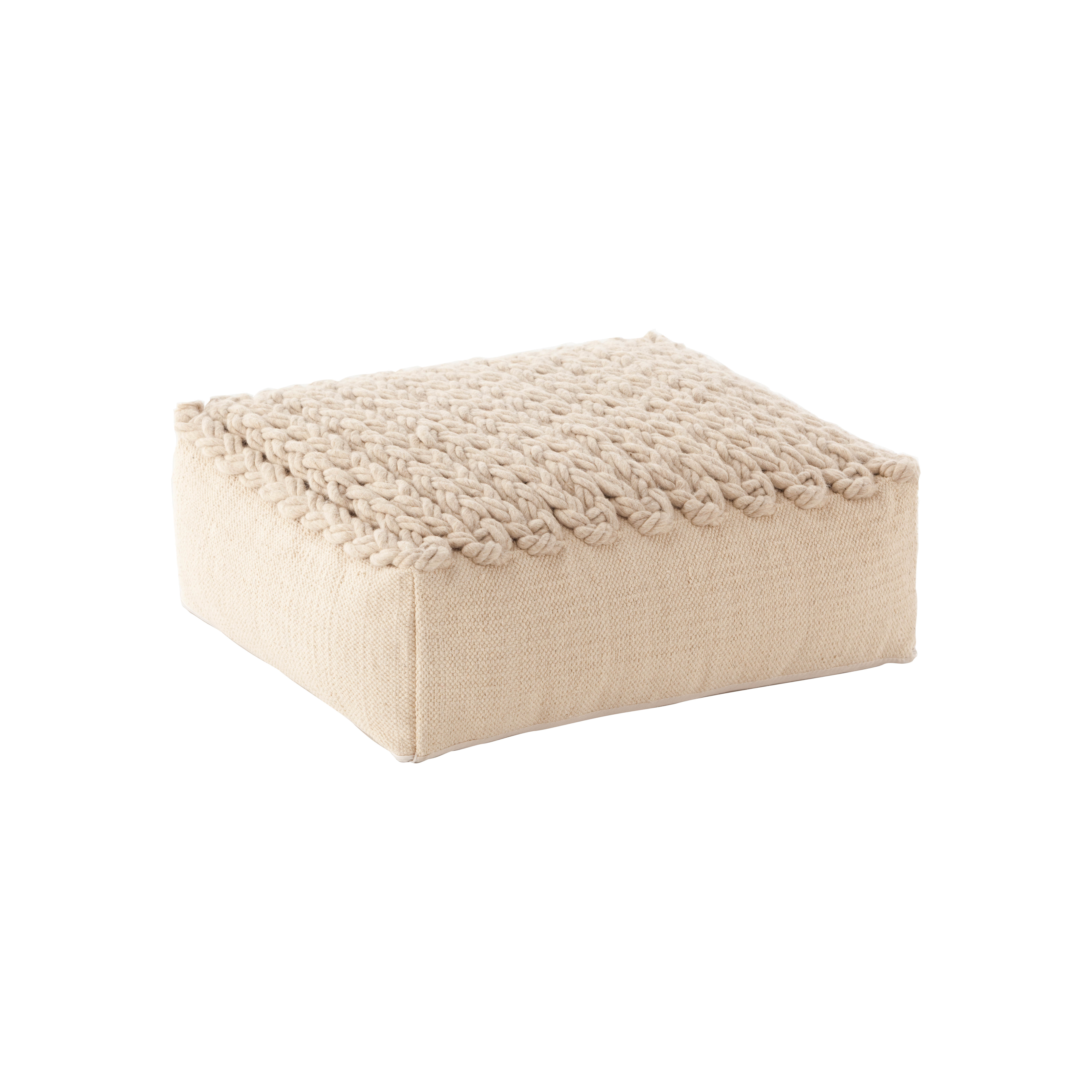
Photo by Chaplin Furniture.
Nude-colored furniture — particularly seating, rugs, and accent pieces — add a touch of understated glamour to a bland room in need of color. These muted shades of beige and pink add a soft pop of vibrance on their own, but can also serve as the backdrop for a more boldly colored accent pillow, curtains or piece of wall art. Try pairing a sand-colored sofa with wine-colored cushions to add depth to your living room.
There is no need to stick to one shade when adding nude colors to a room — try adding a pale pink couch to a room with beige walls, or light caramel ottoman to a linen-colored living room. The variety of hues will make the room more intriguing.
Without creating a convoluted or gaudy aesthetic, nude shades add warmth to spaces that lack personality. Maintaining a clean and chic vibe, they are the ideal interior design choice for a homeowner in search of subtle sophistication.
A journey of an entire year must begin with a single step, and there’s a whole new exclusive crop of design trends to consider for 2019. For design company Boca do Lobo, a key note to keeping up with the upcoming 2019 interior styles is to believe that a room should never allow the eye to settle into one place, and to stay true to one’s unique taste. Something that is charming is never out of style.
For those with wanderlust and an earthy spirit, Boca do Lobo claims that 2019 is the year to express it. A pop of color has more personality than any neutral ever could, and there’s no limit to the number of routes that can be taken with vibrant tones and disarming styles. A sense of vitality and renewal, these are the several key aspects of the 2019’s upcoming trends.
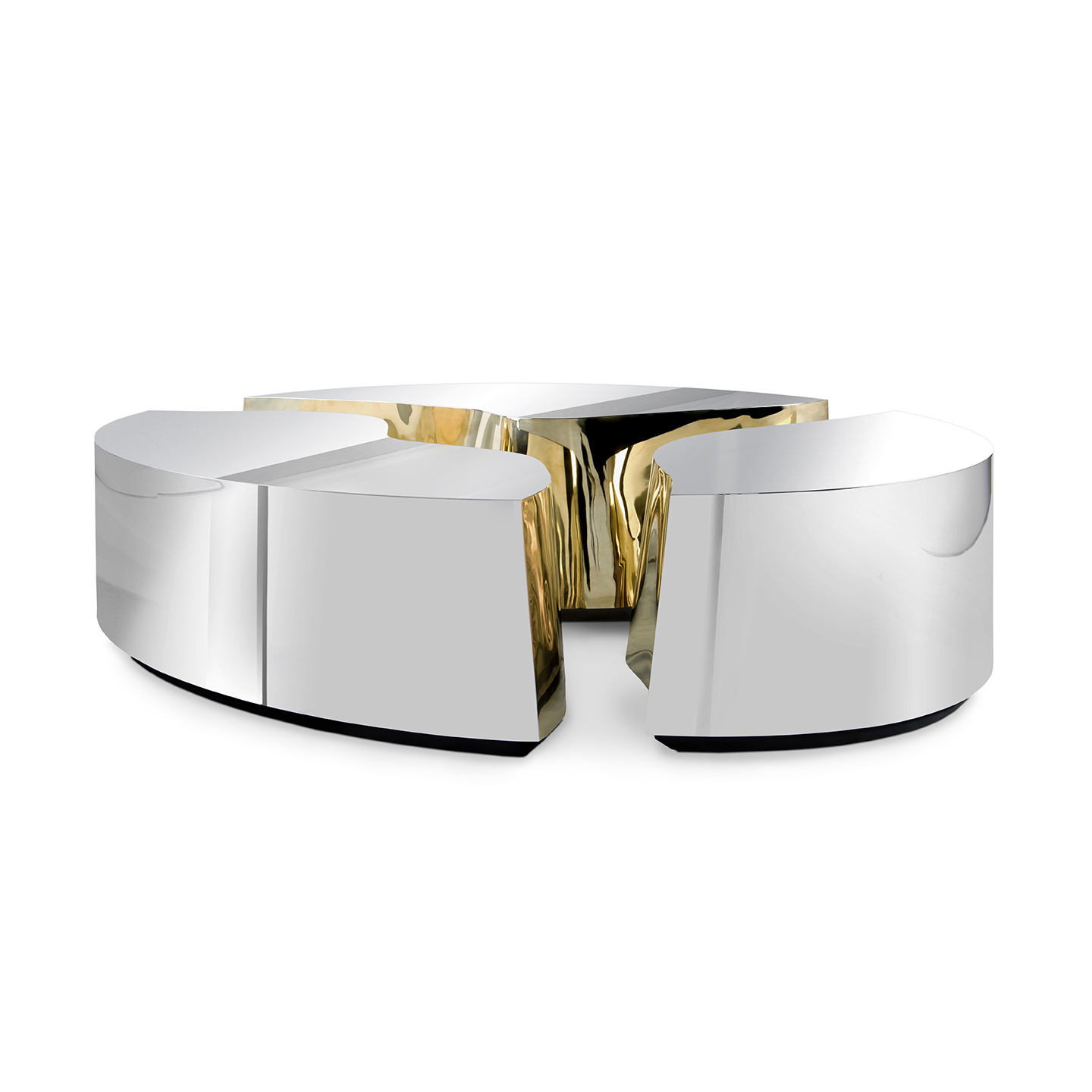
MIXING METALS
Rich metallic over sleek lines bring somewhat of a daring attitude to design. From chic silver, opulent golds and warm bronzes, the anodized surfaces are having its moment now, adding a dramatic flair to surroundings. Chrome arrives with 2019’s standout colors that embody the warmer spectrum of the color wheel.
GOLD ACCENT
Glistening gold never goes out of style, and this year it is used on the most on-trend furnishings and accessories, giving a sense of opulence and refinement. Clever use of gold finishes draws attention to the beauty of material and its highly reflective qualities that sparkle in the light. Exquisite gold interiors are designed to show off such rich details.
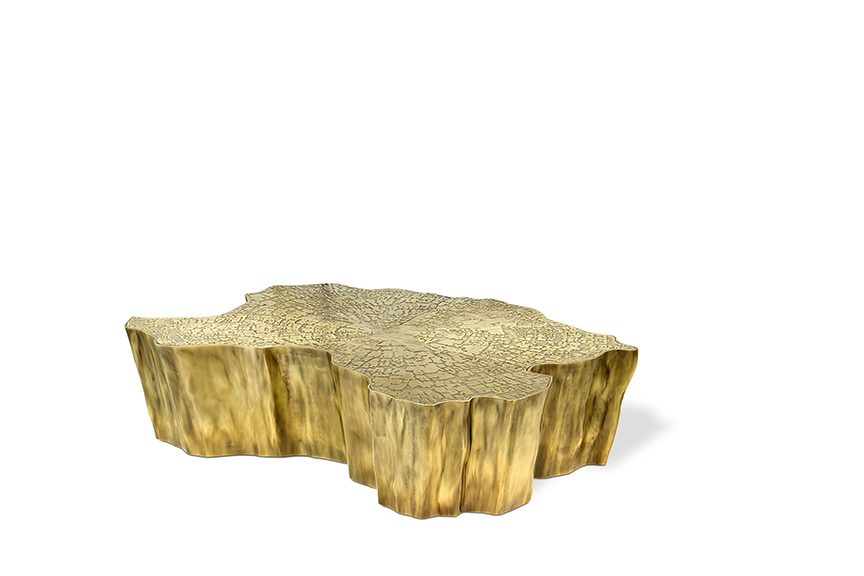
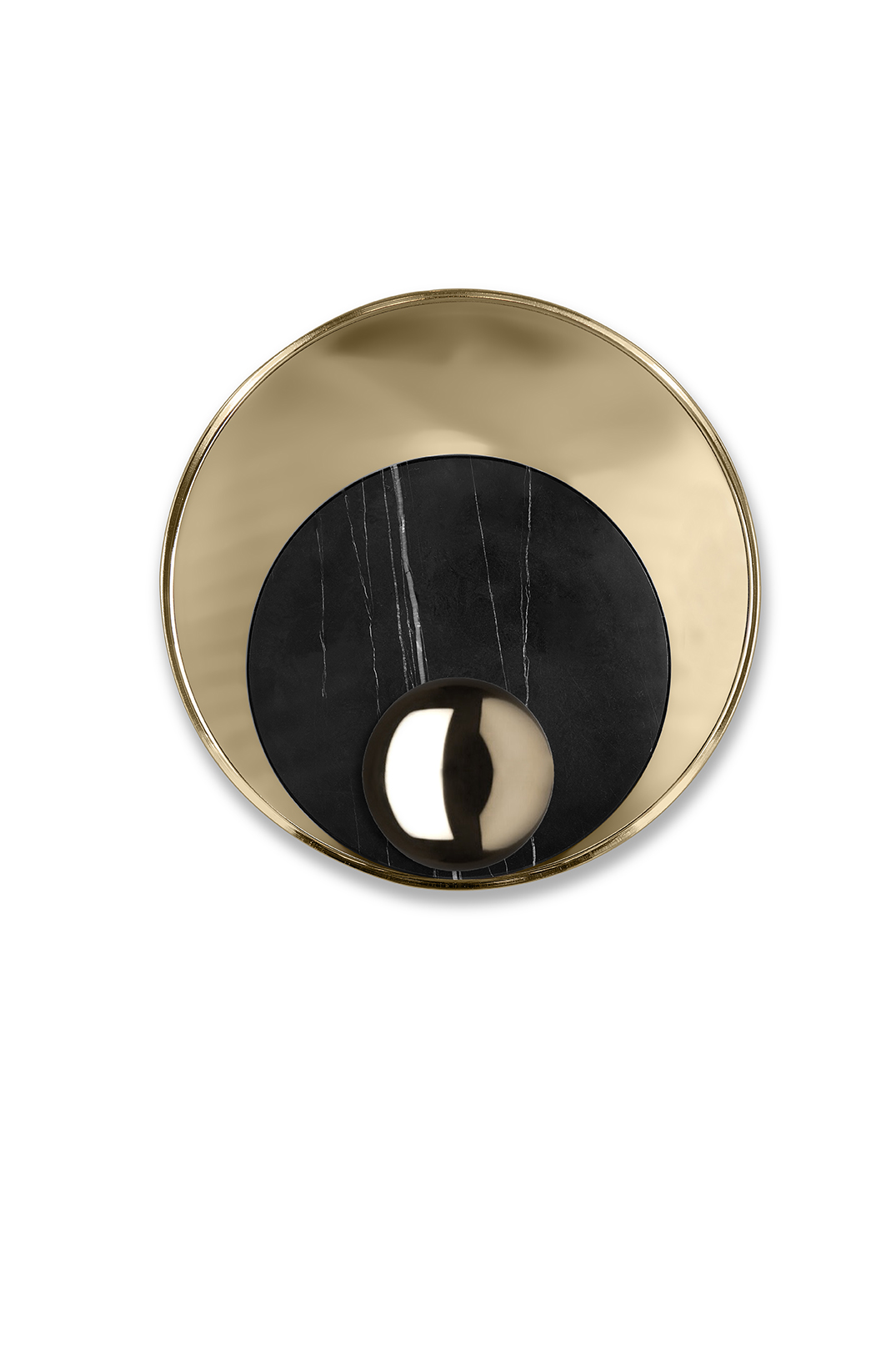
ROUNDED SHAPES
Popular in the ’60s, curved soft furnishings have now taken on interiors with a playful character. From seating to lighting, combining organic forms gives a contemporary atmosphere to the most elegant rooms. Faithful to nature’s movements and the futurist appeal, rounded shapes are one of the most intriguing and covetable 2019 interior design trends.
ANTIQUE & VINTAGE FURNITURE
Antiques have always held a value of their own but now they have found a new design role. From fascinating ancient times, distinct design pieces have re-emerged in a creative way to add a timeless touch. Designers have started to combine vintage furniture pieces with modern products and the result is unique interiors.
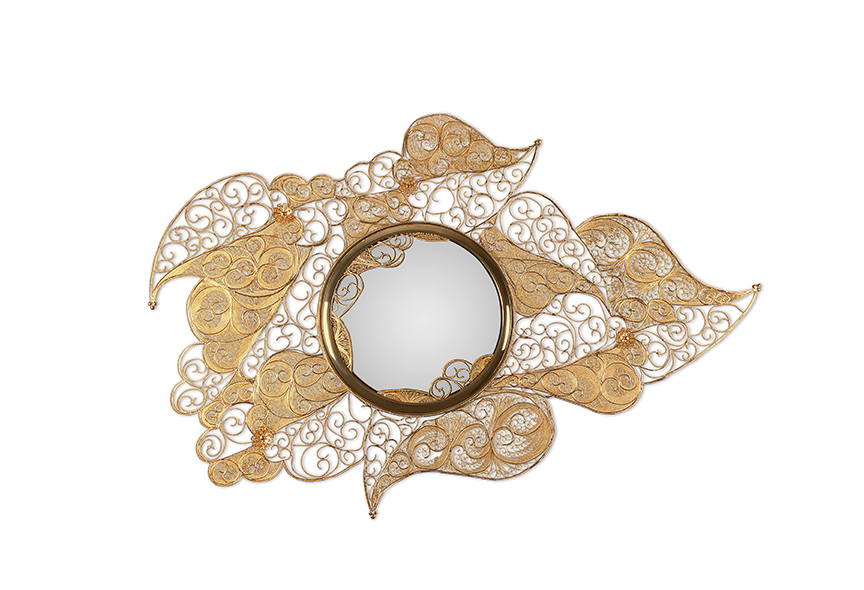
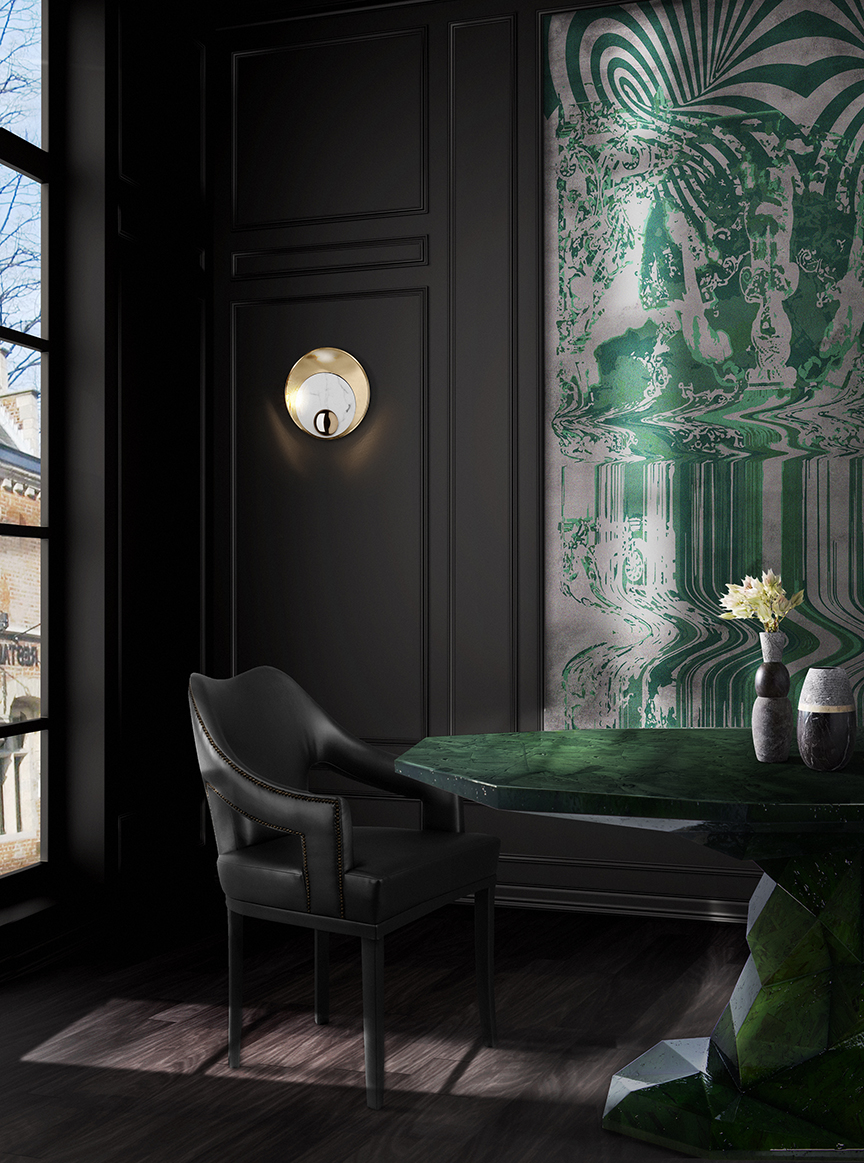
BLACK INTERIORS
To meet design lovers’ sudden demand for sophisticated ambiances, entire collections with black finishes are appearing in the market. With the emerging refined techniques, a certain lack of pretension lies within the functional design and emphasizes solid feeling along with cutting-edge style. Expect to see to seem monochromatic interiors dominating in 2019.
All photos courtesy Boca do Lobo.
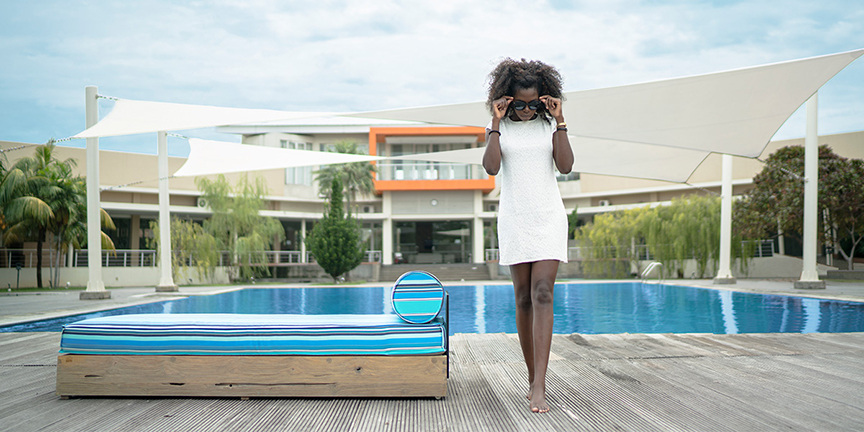
AIKO Lounger. All photos by MAMAGREEN.
Gertrude Jekyll, a British horticulturalist, designer and artist from the late 19th century, once said “The garden should fit its owner or his or her tastes, just as one’s clothes do; it should be neither too large nor too small, but just comfortable.”
Good outdoor design should follow this philosophy in order to create a space that is a comfortable reflection of its owner, according to Michael Toutloff, showroom manager for MAMAGREEN, an outdoor furniture design studio that promises to make a difference in outdoor design.
Headed by designers Vincent Cantaert and Barbara Widiningtias, MAMAGREEN aims to create the best hand-crafted outdoor furniture that features exciting, distinctive designs in the “smartest manner we possibly can,” says Toutloff. Cantaert, CEO and founder of
MAMAGREEN, is a third-generation furniture and from Belgium, while Widiningtias was one of the first women to graduate in wood furniture studies in Semarang, Indonesia. Together their modern, minimalistic designs that are both comfortable and sustainable, as they utilize traditional materials, such as reclaimed teak, and primarily recycled or recyclable materials. “[It] isn’t disposable design,” Toutloff affirms, “it is furniture that is made to last.”
To achieve these distinct designs, Toutloff says the key is to correctly quantify how much space you have to work with. “The biggest mistake someone makes is by trying to force the space to become something it isn’t,” he notes. With this in mind any space can get the perfect revamp it needs, from transforming a small balcony to a quaint entertaining space to installing a cabana in a large backyard to create an intimate oasis getaway.

BAIA Extending Table.
Scale and functionality are priorities when it comes to MAMAGREEN furniture. Pieces like the BAIA extending table come standard with a self-storing filler that allows you to expand to a larger table for entertaining, then downsize for maximum movement and flow.
The versatility of these pieces is what is most attractive, as each product is capable of being customized for reasons corresponding with aging, ADA requirements, mobility and more. The company’s passion for sustainability also contributes to its modern sensibilities, from leaving zero impact on rainforest to upcycling 95 percent of its production waste.
“MAMAGREEN furniture is made with love,” says Toutloff. “There are no conveyor belts in our factory. Instead, product is moved from station to station and built by hand by craftsmen.”
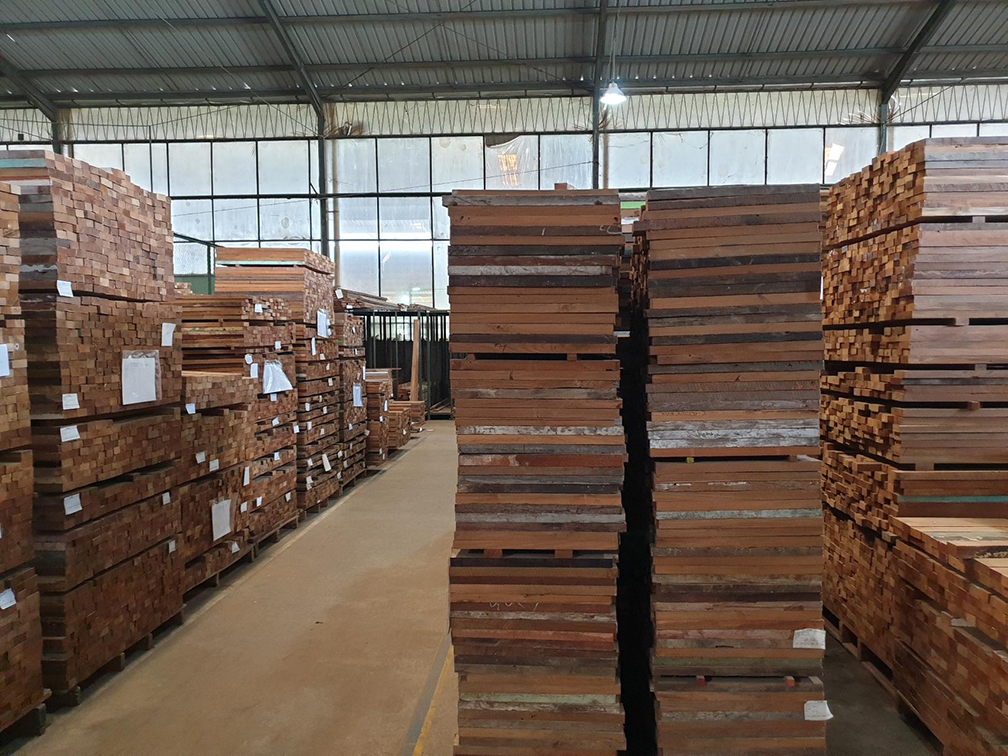
Recycled teak wood at MAMAGREEN workshop.
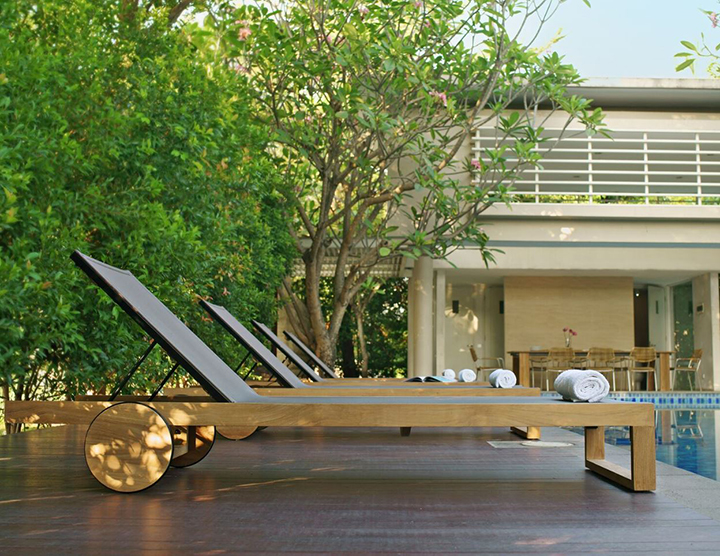
EKKA Lounger.
Appetizing images creatively pair color and food.
When social media marketer Lucia Litman moved to California, she was blown away by the colorful variety of fresh produce that was now available to her. Pleasantly surprised by her new normal, Litman, who also goes by her nickname Lucy, began to document her encounters with fruits and vegetables on her Instagram page.
“There were fruits I hadn’t heard of and vegetables that came in colors I didn’t know was even possible,” she says.
In search of a way to get a larger audience excited about healthy food, she started a series of “#PantonePosts” — a blend of design, nutrition and lighthearted appreciation for everyday luxuries.
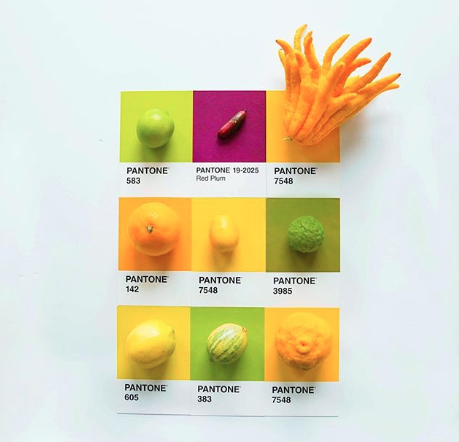
Lucy aims to match fruits, vegetables and other foods to Pantone swatches as closely as possible. Captivating her followers with strikingly similar pairings, she not only features superfoods, but some treats as well. Everything from leafy greens to chocolate-covered fortune cookies has made an appearance, as well as some inedible, but naturally beautiful phenomena like sunsets and flowers.
“I don’t try and push any sort of diet on people, which I think is important,” she says. “There are so many people out there who say that ‘x diet’ is the best, when in reality, it really depends on your body. So I just hope that my photos can bring people together and make them appreciate food and be able to enjoy it online without being preached at about a certain diet or lifestyle.”
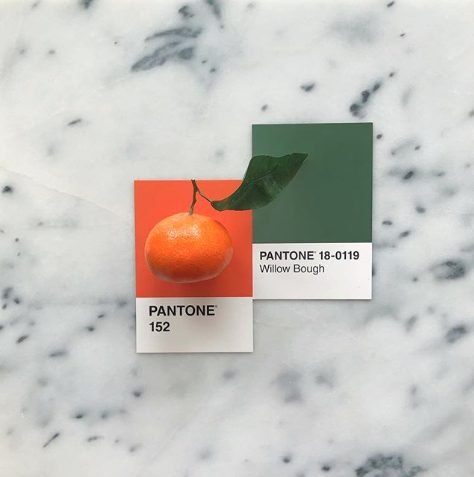
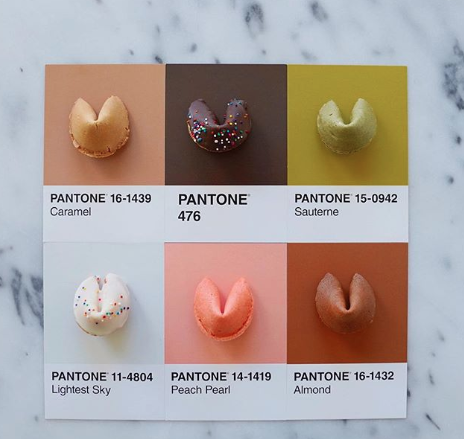

Despite her carefully curated page that suggests she’s a professional artist, Lucy describes her popularity as “a big surprise.”
“It started off as just a hobby, but I get so excited anytime someone shares my work and it makes me so happy to know that people enjoy it,” she says.
Photos courtesy of Lucia Litman via Instagram.











